Map, entrances & directions - - All roads lead to the Louvre
Aller au contenu
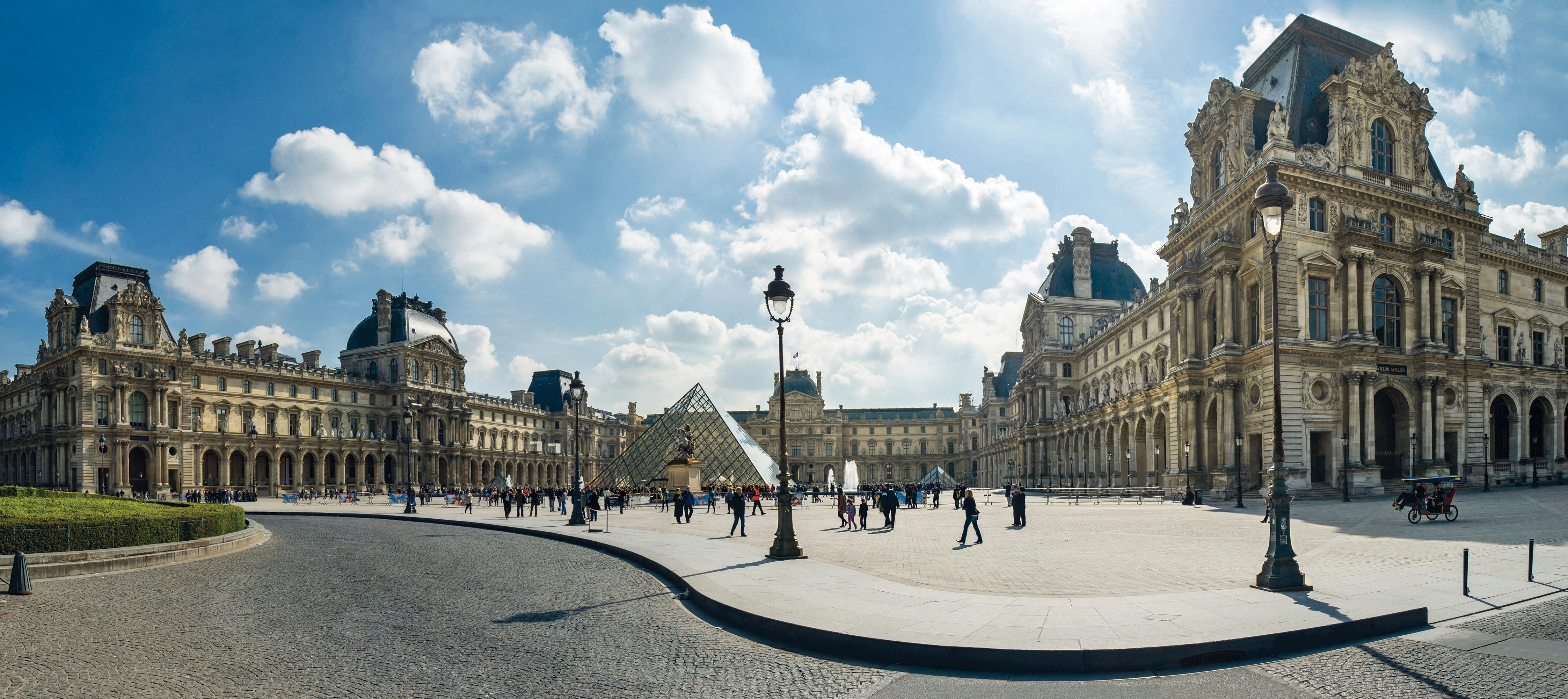

Map, entrances & directions All roads lead to the Louvre Visit | Map, entrances & directions -
Getting here, museum entrances, visitor safety.
Figure out what you want to see and which entrance you should use to access the museum.
Palais-Royal / Musée du Louvre (lines 1 and 7) Pyramides (line 14)
No. 21, 27, 39, 67, 68, 69, 72, 74, 85, 95
An underground car park is located at 1 Avenue du Général Lemonier, from which you can access the museum via the Galerie du Carrousel entrance. It is open daily from 7 a.m. to 11 p.m. Visitors with disabilities are entitled to a reduced car park rate – this can be organised at the dedicated area for visitors with special needs under the Pyramid. See prices .
Bicycle (Vélib' stations)
No. 1015, 2 place A. Malraux No. 1023, 165 rue Saint-Honoré No. 1014, 5 rue de l’Echelle No. 1013, 186 rue Saint-Honoré
There is also an area for parking bicycles available in front of the École du Louvre, near the Porte des Lions. In accordance with the Vigipirate security measures, all bags must be left open.
Drop-off area at the Carrousel roundabout. The closest pick-up area is at Place André Malraux.
Louvre stop, Quai François-Mitterrand
Open Google Maps
Which entrance should I use?
The Pyramid is the Louvre’s main entrance. There are 4 queues: visitors without tickets, visitors with tickets, visitors with membership cards (Amis du Louvre, Louvre Pro, Ministère de la Pass Education, ICOM, etc.) and priority access (disabled visitors, staff members, etc.). At peak times, you may also be able to use the Carrousel, Richelieu or Porte des Lions entrances depending on which category you fit into.
- See all entrances
- I have a ticket
- I don’t have a ticket
- I’m disabled
- I’m coming with a pram
- I am in a group
- I have a membership card
- I have a ticket for an event at the Auditorium
4 entrées — vue null
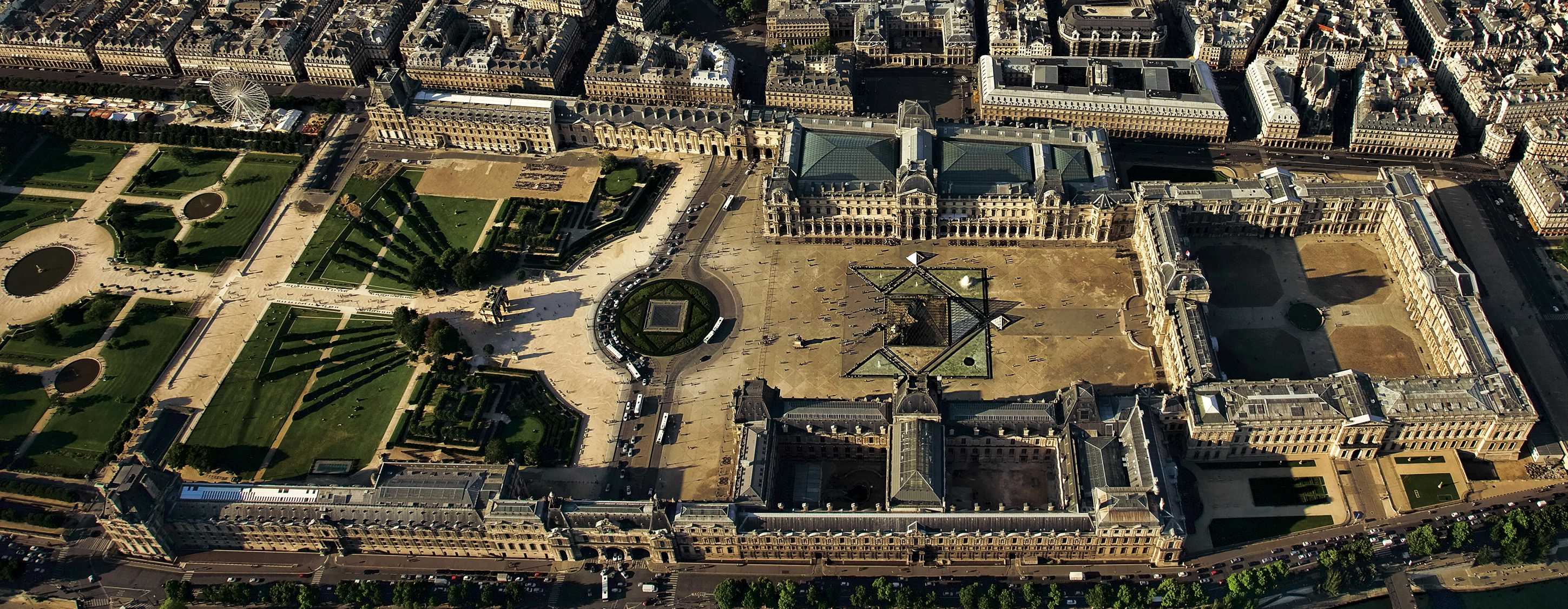
- Porte des Lions
Main entrance for individual visitors, divided into 4 queues:
• Visitors without tickets (orange queue) • Visitors with a ticket or Paris Museum Pass (green priority queue) • Visitors with membership cards (Amis du Louvre, Carte Louvre Education et Formation, Ministère de la Pass Education, ICOM, etc.) • Priority access (disabled visitors and staff members)
The tube lift of the Pyramid entrance is reserved for: • Disabled visitors • Visitors with wheelchairs • Visitors with prams
Staff members are at hand to help.
The Carrousel entrance can be used by all visitors:
• Groups • Visitors with membership cards • Visitors with a ticket
The Richelieu entrance is reserved for groups and visitors with membership cards (Amis du Louvre, Carte Louvre Education et Formation , Ministère de la Culture, ICOM). The Passage Richelieu entrance closes every day after 5:30 p.m.
There are no lockers at the Porte des Lions entrance. You will be refused entry if you have a large bag or helmet. The Porte des Lions is closed every Friday. If the ticket office is closed, this entrance is reserved for visitors who already have a ticket.
Back to type d’affichage des entrées
Finding your way around the museum
You can pick up the museum map (available in 7 languages) at your arrival in one of the information desks. Some rooms in the museum may be closed. Please call +33 (0)1 40 20 53 17 for more information on the day of your visit.
Download the museum map
Download .pdf (3,4Mo)
LIST OF AVAILABLE GALLERIES
Due to renovations, some rooms may be closed during the week. Please check the schedule of room closures to better plan your visit.
INTERACTIVE MUSEUM FLOOR PLAN
Explore the museum’s galleries and find out more information about the collection.
The Musée du Louvre applies the government security directives for public establishments to ensure the safety of visitors. All visitors must comply with security checks. The Musée du Louvre thanks its visitors in advance for their understanding and cooperation.
See visitor regulations
Eiffel Tower to Louvre – Via Metro, Bus, Taxi, Walk
August 7, 2023
Each year, millions of visitors come to Paris to visit two of the most famous attractions around the world, The Eiffel Tower and the Louvre Museum.
And you can’t complete your tour of any of these two attractions without visiting the other one.
That means almost every visitor who visits Eiffel Tower pays their visit to Louvre Museum also, and the same goes for the Louvre Visitors as well; they complete their tour with the Eiffel Tower visit.
In this article, we’ll discuss the distance, location and transportation options between Eiffel Tower to Louvre Museum.
We’ll talk about how to get to Louvre Museum from Eiffel Tower via Metro , Taxi , Bus and even by Walk .
In order to make it more convenient for you, we have also listed the tickets for Eiffel Tower and Louvre Museum .
Key Information
Distance: 3.5 kilometers (by walk)
Time Taken:
- 7 Minutes (By Car)
- 7 Minutes (By Taxi)
- 17 Minutes (by Subway/Metro/Train)
- 25 Minutes (by Bus)
- 43 Minutes (By Walk)
Eiffel Tower Ticket Price: €35 ($39) / Adult
Transportation options available:
Tickets for Eiffel Tower and Louvre Museum
Louvre Museum Ticket Price: €20 ($22) / Adult
Location and Distance to Louvre from Eiffel Tower
The Louvre Museum is located on the opposite side of the River Seine, about 4.3 kilometers (2.7 miles) away from the Eiffel Tower. Get Directions .
It takes approximately twelve minutes by taxi to reach the museum from the tower.
Alternatively, if you choose to walk, the distance is 3.5 kilometers (2.1 miles), which would take approximately 45 minutes.
The walking route offers a pleasant experience, as you would cross the river at the charming Pont Royal (Royal Bridge).
Eiffel Tower to Louvre Museum via Metro
Paris boasts a well-developed Metro system, ensuring convenient access to various locations with a metro station situated within a 500-meter radius (equivalent to 1/3 of a mile).
- In close proximity to the Eiffel Tower, you’ll find two Metro stations: Bir-Hakeim , serving Line 6, and Alma-Marceau, serving Line 9.
- To reach Bir-Hakeim from the Eiffel Tower a brief ten-minute walk is all it takes.
- From there, you’ll board a train on Line 6. After approximately seven minutes and five stops, you’ll arrive at Charles de Gaulle-Étoile station.
- From there, you can transfer to Line 1 and continue your journey to the Palais Royal Musée du Louvre station.
- Overall, this entire trip is estimated to take around 35 minutes.
- Alternatively, you can reach Alma-Marceau Station, which is 1 kilometer (0.62 miles) away from the Eiffel Tower.
- By taking a 15-minute stroll, you can easily reach Alma-Marceau Station. From there, you must board a Line 9 train to reach Franklin D. Roosevelt Station.
- The journey from Alma-Marceau to Franklin D. Roosevelt station takes approximately two minutes. Upon arrival, you will need to transfer to a Line 1 train.
- You will arrive at Palais Royal Musée du Louvre station in just five minutes and four stops.
Overall, this entire trip is estimated to take around 30 minutes.
Eiffel Tower to Louvre Museum via Taxi
The most efficient method of transportation from the Eiffel Tower to the Louvre Museum is by taxi.
If you have limited time, we suggest considering an Eiffel Tower to Louvre taxi as your preferred mode of transportation.
There is a high availability of taxis in the vicinity of the Eiffel Tower, and if you have difficulty hailing one, you can look for a designated taxi stand, also known as a taxi rank.
- One of the closest taxi stands is located at the corner of Rue Jean Rey and Avenue de Suffren, near the Hotel Pullman Paris Tour Eiffel.
- This stand is conveniently situated less than 100 meters (325 feet) away from the Eiffel Tower.
- Additionally, you can book taxis online through various taxi companies such as Centrale Taxi Paris , Les Taxis G7 , and others.
- This provides an alternative means of securing a taxi for your journey.
Tip: You can reach the Louvre Museum by taking an Uber, which typically costs around 10 Euros.
When comparing Uber rides to local Parisian taxis, many tourists often find Uber rides to be more comfortable and budget-friendly.
Eiffel Tower to Louvre Museum via Bus
When traveling to the Louvre, locals and tourists highly recommend Bus No. 72.
This bus from Eiffel Tower to Louvre is renowned for running alongside the picturesque River Seine, offering glimpses of the city’s iconic bridges and monuments.
- To catch Bus No. 72, you can head to the Musée d’Art Moderne – Palais de Tokyo bus station, located approximately 700 meters (half a mile) away from the Eiffel Tower.
- It’s a quick ten-minute walk to reach the bus station.
- Once aboard the bus, after approximately 13 minutes and eight stops, you will need to disembark at the Pont Des Arts bus stop.
- From there, it’s less than a minute’s walk to the Louvre.
For the most up-to-date information on bus routes and schedules, you can refer to RATP , the state-owned public transport operator, which provides the latest information on bus routes and timings.
Eiffel Tower to Louvre Museum via Walking
If you have sufficient time, embarking on a leisurely walk to the Louvre Museum can be a rewarding experience.
The Eiffel Tower to Louvre walking distance is 3.5 kilometers (2.1 miles), following the path alongside the Seine, which adds excitement to the approximately 45-minute stroll.
However, we advise against this option unless you are accustomed to significant amounts of walking.
It’s important to note that the Louvre Museum encompasses an extensive network of art galleries stretching approximately 14.5 kilometers (9 miles). And hence you will also be walking quite a bit inside the Louvre.
Best way to get from the Eiffel Tower to Louvre – Additional Tip
A taxi is the best way to travel from the Eiffel Tower to the Louvre Museum because it offers a direct and comfortable ride, saving time and effort.
Taxis are readily available near the Eiffel Tower and can drop you off right at the entrance of the Louvre, making it convenient for visitors, especially those with limited mobility.
Moreover, it allows you to enjoy the scenic views of Paris while being chauffeured to your destination.
Additionally, if you book an Uber, it only costs you around 10 Euros making it more easy on your pockets.
Eiffel Tower and Louvre Museum Tickets
By purchasing tickets for the Louvre Museum and the Eiffel Tower in advance, you can efficiently visit these iconic Parisian attractions within approximately five hours.
On the contrary, if you buy tickets on-site, you may spend anywhere from 30 to 90 minutes (depending on the season) waiting in line at each attraction’s ticket counter.
If you have already acquired your tickets online, you can bypass the ticket lines and proceed directly to the elevators that will take you up the Eiffel Tower.
In about 90 minutes, you can explore the first and second floors and enjoy breathtaking panoramic views of Paris from the third floor.
Once you have finished exploring the Eiffel Tower, you should allocate at least 30 minutes to travel to the Louvre Museum. However, the duration will vary depending on your chosen mode of transportation.
In a rush, some tourists manage to complete their exploration of the Louvre within two hours.
However, to fully appreciate the world’s finest masterpieces, it is recommended to allow at least three hours for a comprehensive tour.
Regardless of which attraction you visit first, both the Louvre Museum and the Eiffel Tower are certain to create lasting memories for you and your family or group.
Tip: You can also choose to visit the Eiffel Tower during the day and Louvre Museum during the night.
What is the fastest mode of transportation to reach the Louvre Museum from the Eiffel Tower?
The fastest mode of transportation to reach the Louvre Museum from the Eiffel Tower is by taking a taxi or rideshare service like Uber. It offers a direct and efficient journey.
Are any metro stations near the Eiffel Tower connecting directly to the Louvre Museum?
Yes, two metro stations near the Eiffel Tower connect directly to the Louvre Museum. The nearest ones are Bir-Hakeim (Line 6) and Alma-Marceau (Line 9).
How long does the Eiffel Tower to the Louvre walk take?
The walking distance from the Eiffel Tower to the Louvre Museum is approximately 3.5 kilometers (2.1 miles). It takes around 45 minutes to complete the walk, offering a pleasant experience along the Seine.
Are any taxi stands or services available near the Eiffel Tower for convenient transportation to the Louvre?
Yes, there are taxi stands available near the Eiffel Tower for convenient transportation to the Louvre Museum. One of the closest taxi stands is at the corner of Rue Jean Rey and Avenue de Suffren, near the Hotel Pullman Paris Tour Eiffel.
Can I take a bus from the Eiffel Tower to the Louvre Museum? Which bus route should I choose?
Yes, you can take a bus from the Eiffel Tower to the Louvre Museum. Bus No. 72 is popular as it runs along the Seine, providing scenic views of the city’s bridges and monuments. You can board this bus from the Musée d’Art Moderne – Palais de Tokyo bus station.
Is it recommended to purchase tickets for the Louvre Museum and the Eiffel Tower in advance to save time?
It is highly recommended to purchase tickets for the Louvre Museum and the Eiffel Tower in advance. This allows you to skip the ticket counter lines and save valuable time during your visit.
How much time should I allocate to visit the EiffelTower and the Louvre Museum in one day?
To have a fulfilling experience at both the Eiffel Tower and the Louvre Museum, allocate a minimum of half a day. This will give you sufficient time to explore both attractions without feeling rushed. However, if you are short on time, it is possible to visit the main highlights of both sites in approximately five hours by planning your itinerary efficiently.
Suggested article
- Eiffel Tower Opening Hours
- How Long Does Eiffel Tower Tour Take?
- How to reach Eiffel Tower
- Parking Near Eiffel Tower
- Restaurants Near Eiffel Tower
- Stores at Eiffel Tower
- History of the Eiffel Tower
- Top 11 Eiffel Tower Facts
- Eiffel Tower First Floor
Featured Image: Vacatis.com
Got Questions About the Eiffel Tower?
Send us a text at the number below
+38651715555
Terms Of Service
Privacy Policy
Affiliate Disclaimer
Content Information Policy
This is NOT the official website of the Eiffel Tower in Paris. Vacatis operates the website to provide the most accurate and up-to-date information for tourists and locals.
© 2024 Vacatis
Closest Metro Stations to the Eiffel Tower

The best view of the Eiffel Tower is actually from the opposite side of the river Seine at the Trocadéro, accessed by station Trocadéro on metro line 9 and line 6. The picture of the Eiffel Tower here is from the Trocadero.
(Photo by Edgley Cesar )
(Map courtesy of RATP )
Compact Printable Metro/RER Map
Full Size Paris Metro/RER Map (PDF)
- Ask a question

I want to support Ben
2 thoughts on “ Closest Metro Stations to the Eiffel Tower ”
Pingback: Paris by Train · Paris RER C Schedule
Pingback: RER C Train Map | Paris by Train
Comments are closed.
- Terms of Service
- Privacy Cookie Policy
How To Get to the Eiffel Tower From Anywhere in Paris
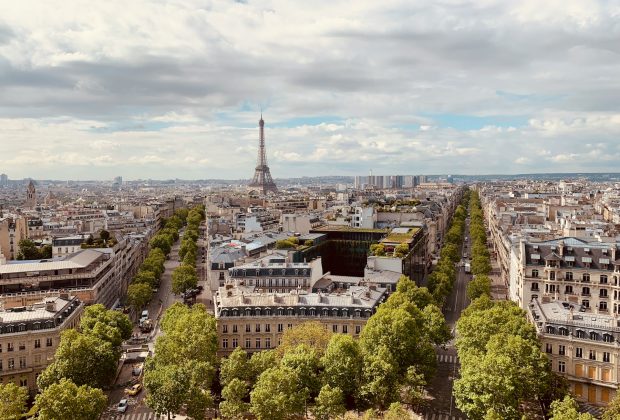
Wherever you’re in Paris, a metro stop is never far away. Add a superb RER and bus network, and it really doesn’t matter where you choose to stay. Whether you’re in a budget-friendly arrondissement or a suburb, you can be in the center of Paris with, at most, one changeover.
The Eiffel Tower is arguably the most important sight to search out for visitors to the City of Light. While you can stay in a nearby hotel or even get a room with a view of the Eiffel Tower , chances are that you’ll stay in a different arrondissement.
Luckily, Paris has a fabulous public transport system, with reliable buses, very regular metro lines, and fast RER trains that connect you with the suburbs. Here are the best and fastest ways to get to the Eiffel Tower from wherever you are staying inside or just outside of Paris.
Pro tip: If you’re a first-timer in Paris, don’t try to maneuver through Châtelet station. While it offers many options and great connections, it’s vast and confusing. You’ll likely end up spending more time getting between lines than you’ll save using one of the options avoiding Châtelet.
From the 1st arrondissement to the Eiffel Tower
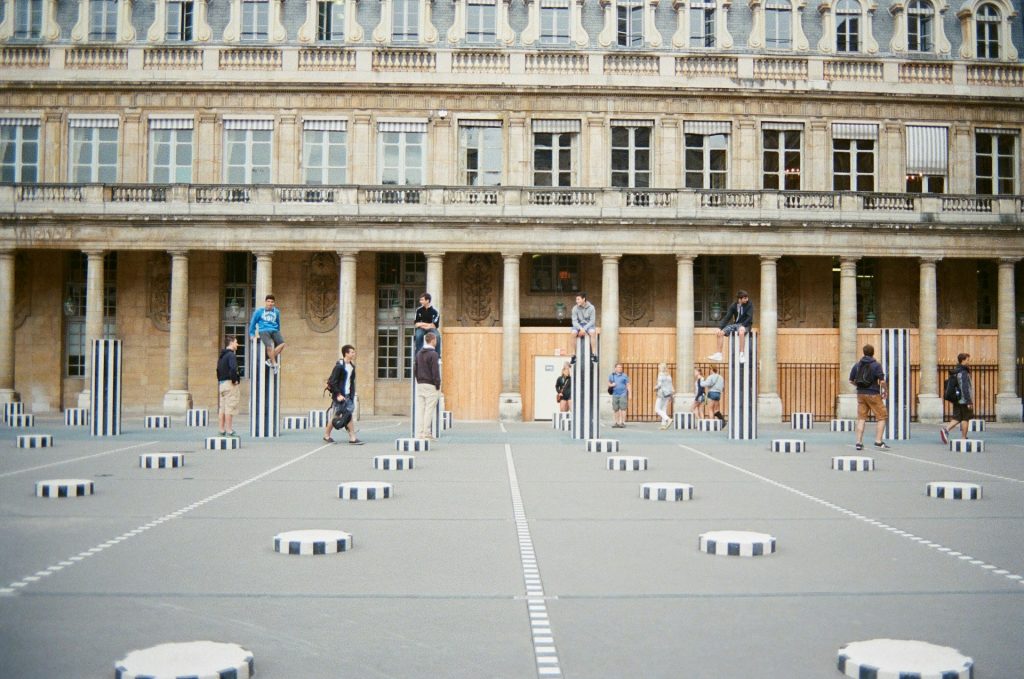
If you’re lucky enough to stay in the 1st arrondissement, then you’re right in the heart of Paris. You’re close to the Louvre with access to all the best connections across the city.
While you could easily walk along the Seine to the tower, you can also hop on the bus 72 at Louvre-Rivoli, toward Parc de Saint-Cloud, and exit at Pont Bir-Hakeim, at the foot of Trocadéro, and walk across the bridge.
Or take metro 1, toward La Défense, and change at Franklin D. Roosevelt into the metro 9 toward Point de Sèvres and exit at Trocadéro to walk down to the Eiffel Tower, along one of the most iconic approaches.
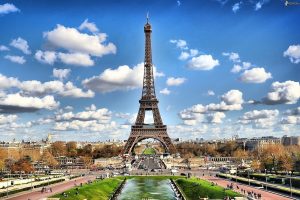
See the Eiffel Tower with a local guide
2éme, the fashionable sentier.
From the 2nd arrondissement, the easiest and direct way to get to the Eiffel Tower is by metro line 9, from Grand Boulevards direction Pont de Sèvres, and exciting at Iéna. From there it is a lovely 7 minute walk along the Seine, or you can hop onto bus 82 toward Luxembourg and get out at Tour Eiffel.
3éme, the hip Haut Marais
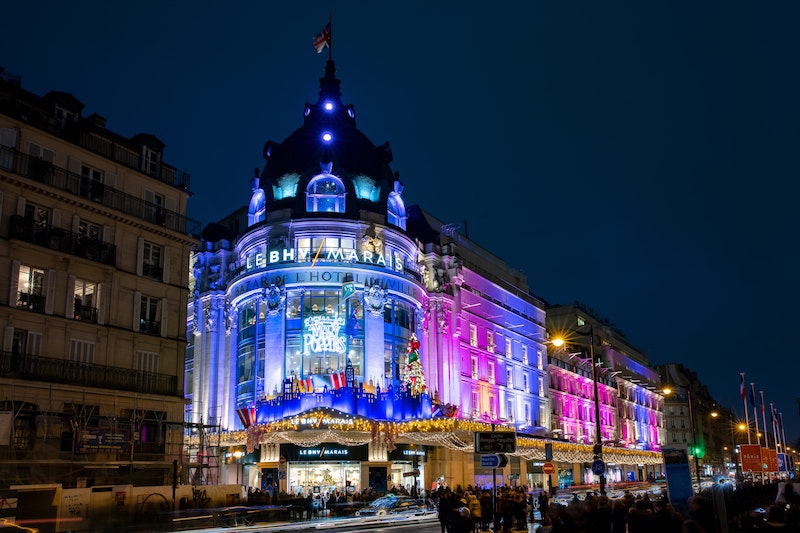
The lovely old quarter of the Haut Marais is a hugely popular quarter to stay in. With the station République in the northern part, you have plenty of options. The metro line 8, direction Balard, takes you to Ecole Militaire at the bottom of the Champ de Mars, with a nice approach. Line 9, direction Pont de Sèvres, allows you to walk down from Trocadéro.
For a bus ride, take the 69 toward Champ de Mars and exit at RAPP- La Bourdonnais, basically in the middle of the Champ de Mars.
4éme, Marais and Saint-Paul
This little arrondissement is spread between the Haut Marais and the Seine. You have Saint-Paul in the north, where metro 1, direction La Défense takes you to Franklin D. Roosevelt. From here, you change into the metro 9 toward Point de Sèvres, and exit at Trocadéro.
Or take the 69 from Saint Paul toward Champ de Mars and exit at RAPP- La Bourdonnais. You could also take the 72 from Pont Marie in the direction of Parc de Saint Cloud, and exit at Le Notre, at the bottom of Trocadéro.
5éme, the Latin Quarter
From the Latin Quarter , on the same side as the Eiffel Tower, you can, if you are staying near the Seine, hop into the RER C at Saint-Michel Notre Dame, heading westwards, either in direction Versailles or Pontoise. Both stop at Champ de Mars Tour Eiffel, after just four stations.
For a ride with a view, take the 86 bus from Rue de l’École de Médecine just off Odéon, which takes you to Rapp La Bourdonnais by the Champ de Mars.
6éme, Saint-Germain-de-Prés and Luxembourg
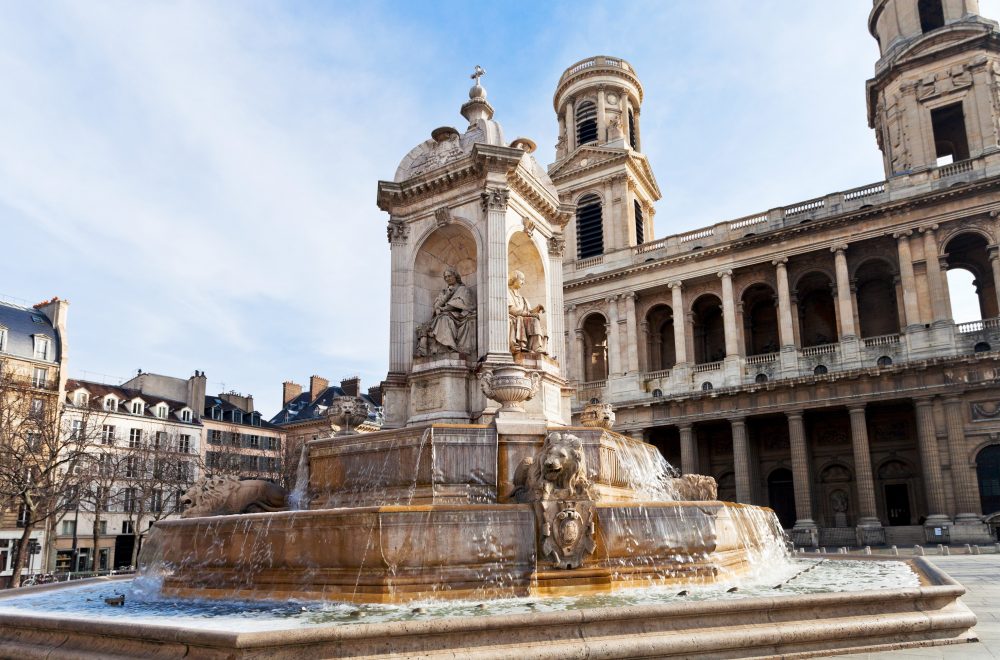
Metro line 10 meanders through this quarter around Saint-Germain-de-Prés and you can take it from stations such as Odéon, Sevrés-Babylon or Duroc toward Boulogne Pont Saint Cloud. From here, either change onto line 6 toward Charles de Gaulle Étoile to Bir-Hakeim, at La Motte Picquet Grenelle, or walk — it’s not far.
7éme, Home of the Eiffel Tower
Congratulations, you are staying in the same arrondissement as the Eiffel Tower, and it is perfectly walkable from anywhere. The furthest away point would be Sevrés Babylon, where you could always catch bus 86, coming from the 6 th arrondissement.
8éme, Champs Élysées and Beyond
If you’re staying in the swanky south of the 8éme arrondissement, chances are you can just walk the few steps along the Seine to the Eiffel Tower. If you’re closer to the Champs Élysées in the north of the area, take the 42 bus from either Champs Élysées Clemenceau or Champs Elysées Rond Point direction Cours de l’Île Seguin, and get off at Champ de Mars – Suffren.
9éme, Theatreland
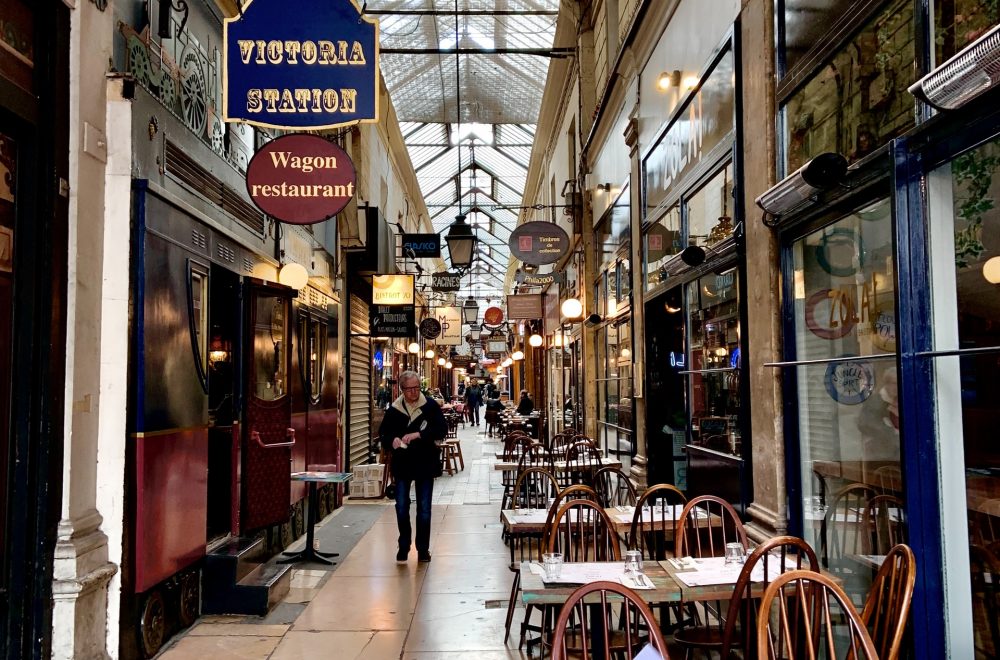
The hip 9éme arrondissement with its many beautiful covered passages stretches from the top of the 2éme to the south of Montmartre. It’s crisscrossed by various metro and bus lines.
The fastest and easiest way to get straight to the Eiffel Tower is by taking metro line 8 toward Balard from Chaussée d’Antin La Fayette or Opéra to École Militaire. If you’re closer to Pigalle, take bus 30 from Pigalle, direction Hôpital Européen George Pompidou, and get off at Tour Eiffel.
10éme, Canal Saint-Martin and More
Handy for the national and international train connections from Paris, it’s a little harder to get to the Eiffel Tower from the 10éme than other arrondissements.
Metro line 4 direction Bagneaux Lucie Aubrac takes you to Odéon, where you can hop on bus 86 from Rue de l’École de Médecine to Rapp La Bourdonnais. You can also take metro 5 toward Place d’Italie, change at République into line 9 toward Pont de Sèvres, and exit at Trocadéro.
11éme, From Oberkampf to Bastille
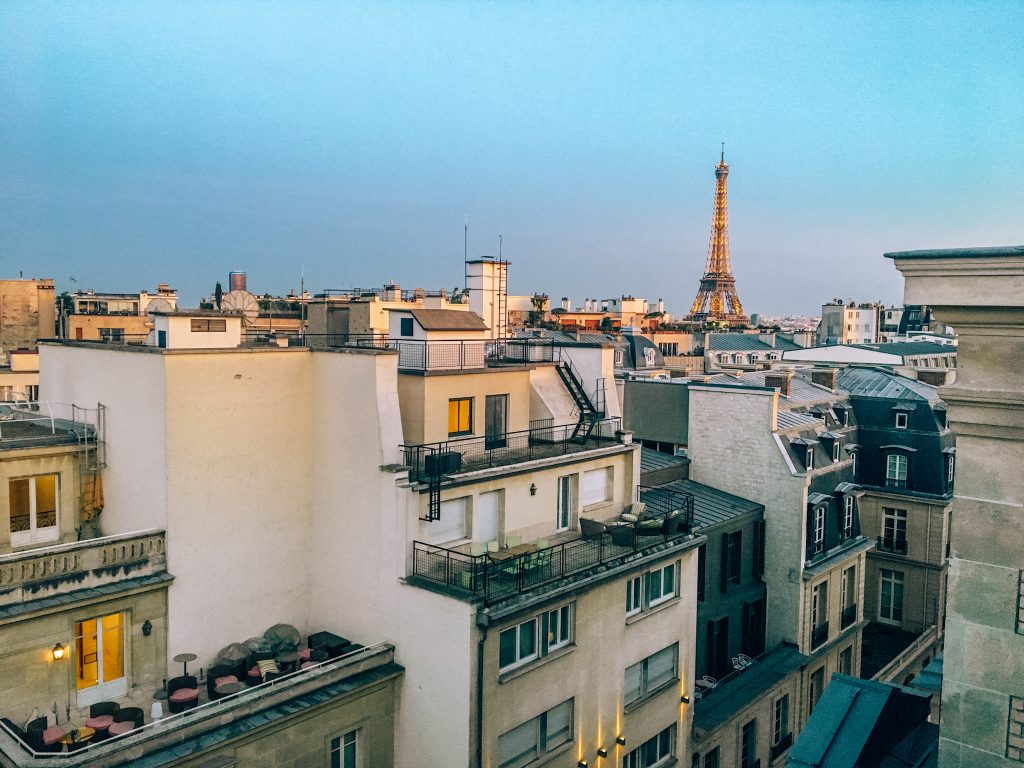
Quite spread out, the 11éme has the handy République in the north, and Bastille in the south, both excellent hubs.
For République connections, see 10éme, and from Bastille, take metro line 5, direction Place d’Italie, and change into RER C at Gare d’Austerlitz, into direction Versailles or Pontoise, and exit at Champ de Mars Tour Eiffel.
Alternatively, take the metro line 1 toward La Défense, and change at Charles de Gaulle-Étoile into metro line 6 (direction Nation) to either Trocadéro or Bir-Hakeim.
12éme, Around Gare de Lyon
Although it’s at the other end of Paris, the 12éme has a couple of direct connections to the Eiffel Tower, even if they take time.
If you’re taking the bus, estimate about an hour. However, you’ll get to indulge in plenty of sightseeing along the way. Bus 72 (direction Saint Cloud, takes you all the way from Gare de Lyon to Pont d’Iéna, all along the Seine.
If you’d rather ride the metro, take line 6, direction Charles de Gaulle Étoile, to either Bir-Hakeim or Trocadéro.
13éme, Modern Architecture and Floating Restaurants
From this often wrongly over-looked arrondissement, you can take the RER C from Bibliothèque François Mitterrand toward Versailles or Pontoise, and exit at Champ de Mars Tour Eiffel.
You can also take the fast metro line 14 from Bibliothèque François Mitterrand or Olympiades (direction Saint-Denis) to Madeleine and change into the 8 (direction Balard) to École Militaire.
14éme, Observatory and Catacombs
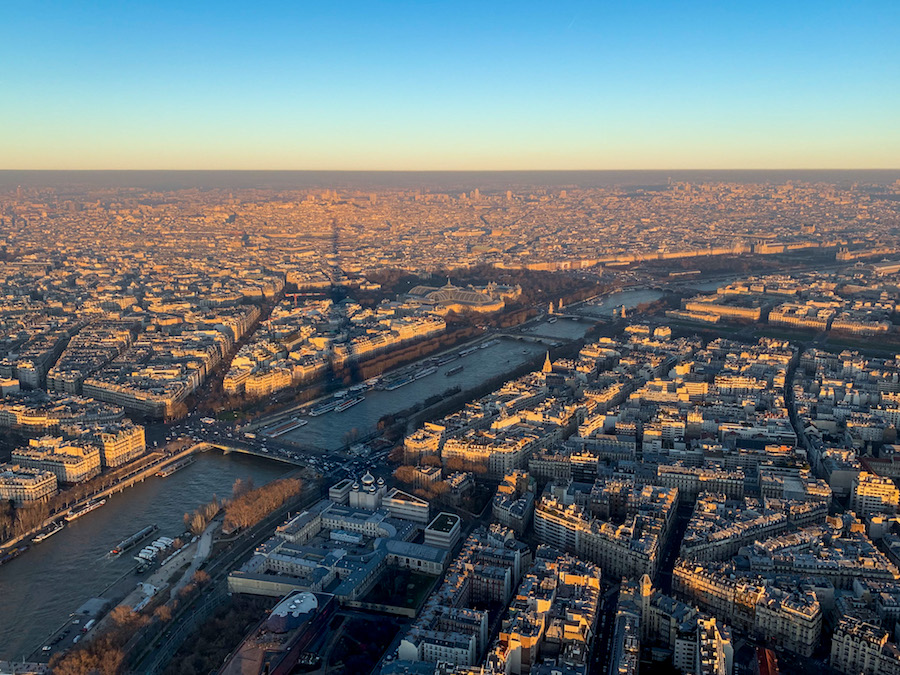
Throughout the Montparnasse neighborhood , you’ll not only spot the Eiffel Tower, but can also grab some great connections.
Take metro line 6 across the arrondissement, which will drop you right at Bir-Hakeim (direction Charles de Gaulle Étoile) to bus 82 from Montparnasse Cinémas (direction Hôpital Américain). This lets you get to stop Champ de Mars — Suffren within 20 minutes.
15éme, Many Hidden Treasures
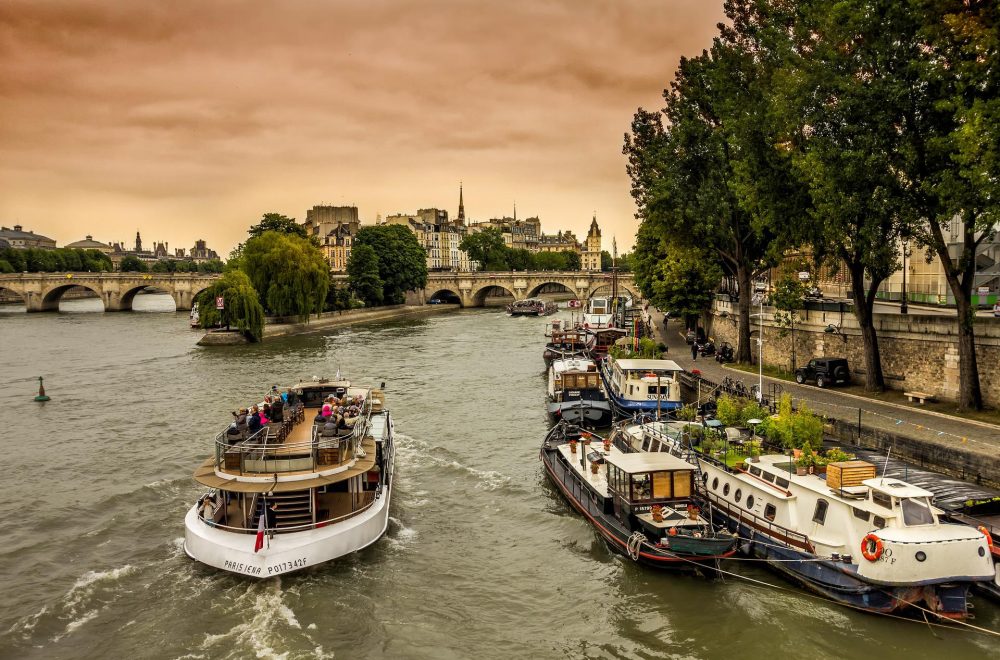
This arrondissement either sees you staying within steps from the Eiffel Tower, or right down at the outer south-western edge of the city.
If you’re near the Seine and don’t fancy the stroll, catch the RER C from Pont du Garigliano to Champ de Mars Tour Eiffel. Alternatively take metro line 8, which traverses the arrondissement in the direction of Créteil, and emerge at École Militaire, after a few short stops.
16éme, Passy and Fine Living
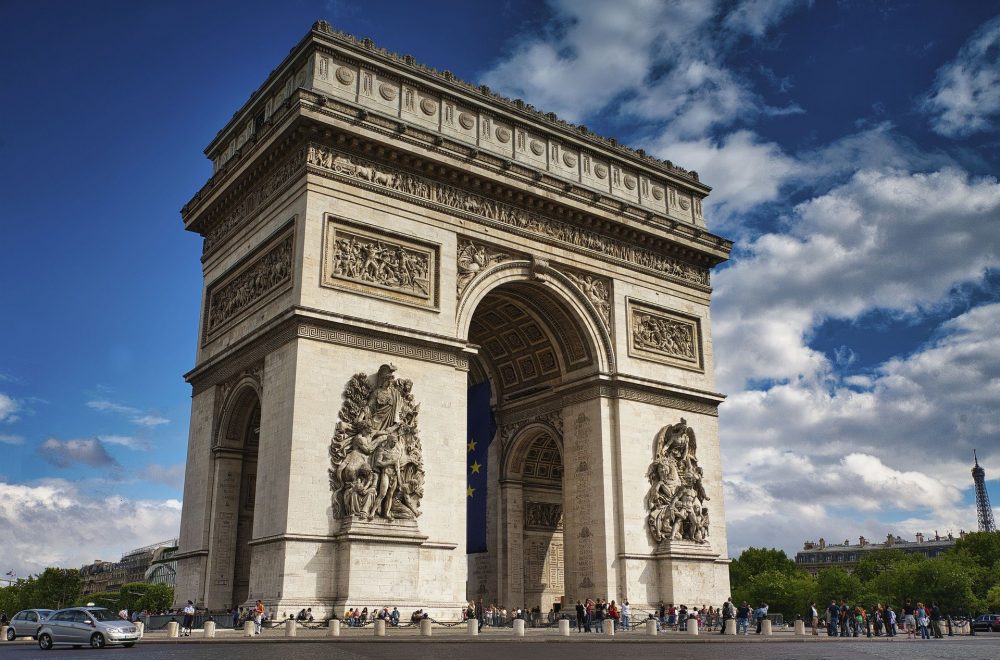
This arrondissement is the largest in Paris, made up of two merged arrondissements and encompassing the Bois de Boulogne.
If you’re near the Seine, or anywhere in Passy, the Eiffel Tower is just steps away. If you’re closer to the Arc de Triomphe , then trusty metro line 6, direction Nation, will take you to La Dame de Fer, the Iron Lady.
17éme, Parks and Cafés
The 17 th has various ways to get to the Eiffel Tower. If you’re near Pereire or Porte Maillot in the north of the arrondissement, then the RER C (into direction Saint Martin d’Étampes) takes you straight to Champ de Mars Tour Eiffel.
If you’re near Avenue de Ternes, hop onto metro line 6, direction Nation at Charles de Gaulle Étoile and get out at Bir-Hakeim.
Or take Bus 30 from Place de Ternes toward Hôpital Européen George Pompidou, and get off at Tour Eiffel. The bus option is the most scenic of the lot.
18éme, Montmartre and Beyond
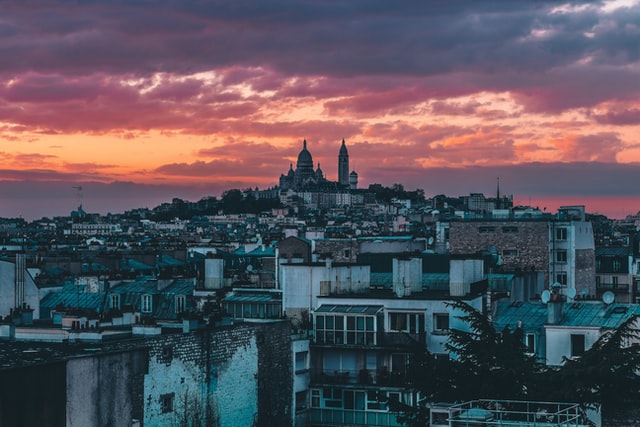
If you’re staying in the north of Montmartre , there’s a nearly one-hour long bus route, number 80 (direction Porte de Versailles), that takes you from Lamarck Caulaincourt to Bosquet Rapp on the Seine, or a bit further to École Militaire.
If you’re on the western side of the neighborhood, metro line 13, direction Châtillon-Montrouge from Guy Môquet or La Fourche, will take you to Invalides. From here, you can easily walk or change into the 8 to Balard, and get out at École Militaire.
19éme, Urban Art and Canals
On the outer north-eastern edge of Paris, this arrondissement might look far away from the Eiffel Tower, but you’re just one change away.
From Ourcq take metro line 5 toward Place d’Italie, and change at Oberkampf into the 9 to Pont de Sèvres. Then exit at Alma-Marceau for a brief walk along the Seine.
You could also continue on the 5 to Place d’Italie and change there into the 6, in the direction of Charles de Gaulle Étoile and exit at Bir-Hakeim. The 6 is overground so you’ll get a chance to see Paris on your ride.
20éme, Home of Père Lachaise
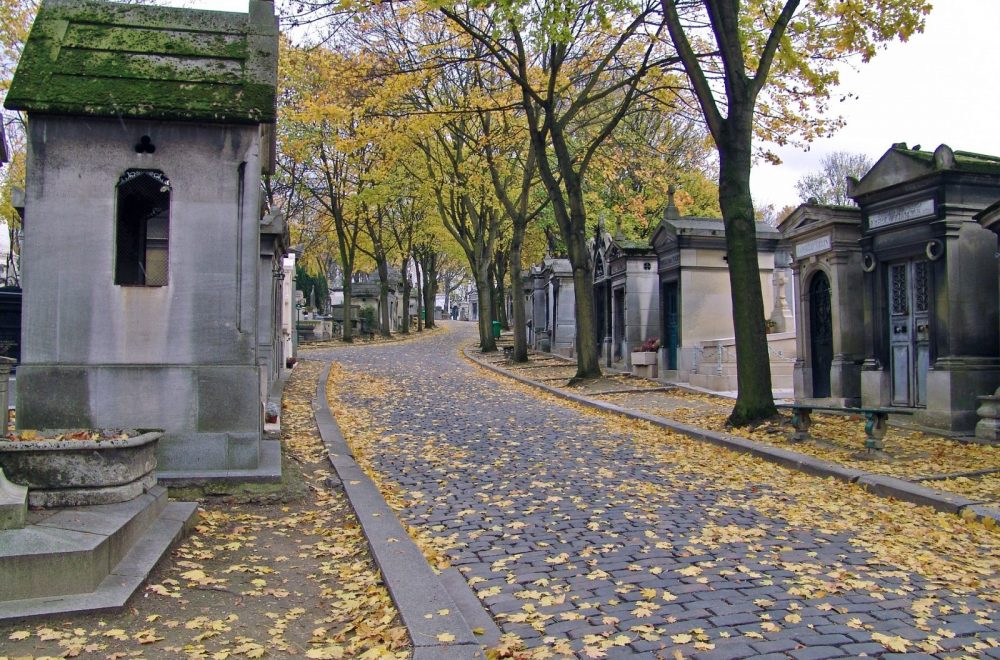
The hip 20éme spreads along the outer eastern edge of Paris. If you’re staying closer to Nation, it’s an easy hop onto metro line 6, direction Charles de Gaulle Étoile, for a lovely ride to Bir-Hakeim.
If you’re closer to Père Lachaise , catch metro line 9 (direction Pont de Sèvres) at Voltaires and exit at Alma-Marceau for a brief walk. Or hop on the bus 72 direction Parc de Saint-Cloud for one or two stops.
Disneyland Paris
If you are doing Euro Disney and staying at the Disneyland Paris resort, it’ll take just over an hour to get to the Eiffel Tower. Get onto RER A toward Poissy and change at Charles de Gaulle-Étoile onto metro line 6 toward Nation and exit at Bir-Hakeim.
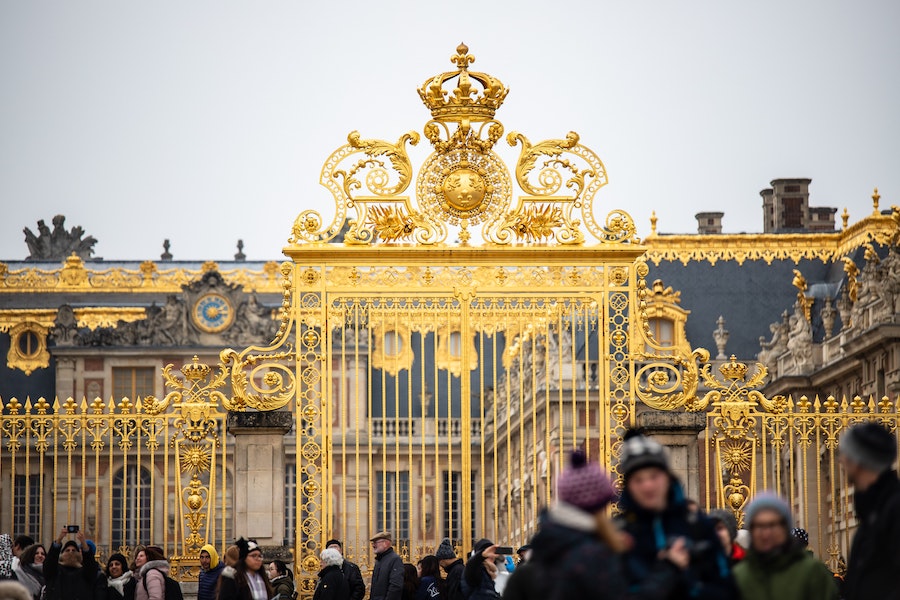
From both the Versailles train stations, Versailles Chantier, and Versailles Château Rive Gauche, you can take RER C (the merge after a couple of stations) toward Paris and exit at Champ de Mars Tour Eiffel. The exit closest to the Eiffel Tower is clearly marked.

It’s easy to get to the Eiffel Tower
Paris is very much about walking and taking public transport. Unless you’re low on time, I recommend you take buses or metro line 6 to get the beautiful views of the city.
Whatever your method of transport, be sure to enjoy the Eiffel Tower and everything else the city has to offer. If you want to make the most of your time at the Eiffel Tower, be sure to sign up for one of our guided tours . They’re the best way to see the Iron Lady.
See the Tower up close
Related guides.
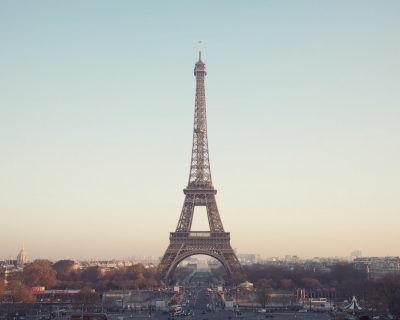
Best Views of the Eiffel Tower: 6 Top Spots for Photos
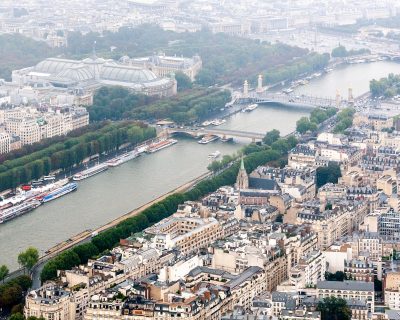
Everything You Can See From the Eiffel Tower (All 3 Levels)
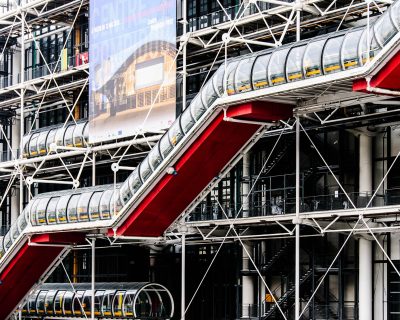
Paris Architecture: 5 Must-Sees Compared to the Eiffel Tower
TheBetterVacation.com
Tout sur les attractions touristiques
Du musée du Louvre à la Tour Eiffel – en métro, bus, taxi et à pied

De nombreux touristes en vacances à Paris choisissent de visiter le musée du Louvre et la tour Eiffel le même jour.
Quant à savoir quelle attraction ils visitent en premier, eh bien, cela dépend.
En raison de toutes les marches nécessaires, certains touristes préfèrent visiter le Louvre lorsqu'ils sont le plus énergiques.
Beaucoup d'autres préfèrent explorer d'abord la Tour Eiffel car cela prend moins de temps, puis visiter la Musée du Louvre après la tombée de la nuit explorer les galeries à son rythme.
Si vous prévoyez de voir la Tour Eiffel en premier, consultez notre article sur Comment aller de la Tour Eiffel au Musée du Louvre .
Si vous souhaitez visiter d'abord le plus grand musée d'art du monde, puis la Tour Eiffel, poursuivez votre lecture.
Table des matières
Louvre et tour eiffel en une journée, billet d'entrée au louvre le moins cher, visite guidée du louvre, visite guidée pour les familles, billets d'accès prioritaire, billets pour l'ascension de la tour eiffel, billets pour le sommet de la tour eiffel, à quelle distance se trouve la tour eiffel du louvre, du musée du louvre à la tour eiffel, tour eiffel + louvre + croisière sur la seine, tour eiffel + louvre + croisière + visite de paris.
Vous pouvez visiter les attractions parisiennes en cinq heures environ si vous gérez votre temps efficacement.
On sait que les touristes pressés finissent d’explorer le Louvre en deux heures.
Si vous avez déjà acheté votre Billets Musée du Louvre à l'avance, il faut au moins trois heures pour faire un bon tour des meilleurs chefs-d'œuvre du monde.
Si vous décidez d'acheter vos billets au Musée, il vous faudra compter entre une heure et deux heures, selon la saison, en raison des longues files d'attente aux guichets.
Une fois que vous aurez exploré les galeries du Louvre, il vous faudra au moins une demi-heure pour rejoindre la Tour Eiffel.
Ce temps variera en fonction de votre choix de transport.
Si vous avez déjà acheté votre Billets Tour Eiffel , vous pouvez vous diriger directement vers les ascenseurs pour vous emmener. Sinon, vous risquez de passer beaucoup de temps dans les files d'attente aux guichets, ce qui n'est pas nécessaire.
Avec un billet en ligne en main, il vous suffit de 90 minutes pour explorer la Tour Eiffel.
Suivez le lien pour en savoir plus sur le superbe Pyramide du Louvre , avant votre visite.
Retour au sommet
Billets Musée du Louvre et Tour Eiffel
En raison de leur proximité, de nombreux touristes pensent qu'il peut y avoir un billet combiné Louvre et Tour Eiffel.
Malheureusement, il n'en existe pas.
Vous pouvez les voir tous les deux le même jour, mais vous devez acheter leurs billets d'entrée séparément.
Meilleurs billets pour le musée du Louvre
Nous recommandons ci-dessous trois billets pour le Louvre -
À 25 € par personne, c'est le billet le moins cher pour visiter le meilleur musée d'art du monde. COMMANDER MAINTENANT .
En deux heures, un expert en art local vous aide à éviter la foule massive et vous montre les chefs-d'œuvre et les joyaux sous-estimés du Louvre. COMMANDER MAINTENANT .
Cette visite guidée de 2 heures du musée du Louvre est personnalisée pour les enfants et les adultes, et un guide spécial enfants accueille votre famille. COMMANDER MAINTENANT .
Les amateurs d'art qui ne sont pas en vacances à petit budget sont connus pour réserver un visite privée du musée du Louvre pour la meilleure expérience possible.
Histoire visuelle : 16 conseils incontournables avant de visiter le musée du Louvre
Meilleurs billets Tour Eiffel
Il existe trois façons de découvrir la Tour Eiffel :
Évitez les longues files d'attente et prenez un ascenseur jusqu'au 2ème étage de la Tour Eiffel. Ce billet est le moyen le plus rapide d'explorer l'attraction. COMMANDER MAINTENANT .
Parfait pour les visiteurs qui souhaitent économiser quelques euros et sont suffisamment en forme pour gravir plus de 700 marches jusqu'au 2ème étage de la tour. COMMANDER MAINTENANT .
Ce billet vous emmène au 3ème étage, la plus haute plate-forme d'observation de la Tour Eiffel. COMMANDER MAINTENANT .

La Tour Eiffel se trouve à 3.5 km du musée du Louvre, de l'autre côté de la Seine.
Un taxi peut parcourir cette distance en 10 minutes.
Si vous décidez de marcher, il vous faudra environ 45 minutes. C'est une jolie promenade, avec la traversée de la rivière au Pont Royal.
Vous avez quatre options pour vous rendre à la Tour Eiffel depuis le musée du Louvre : le métro, le bus, le taxi et une belle promenade tranquille.
Vers la Tour Eiffel en métro
Paris a un service de métro évolué, et presque chaque endroit a une station de métro à moins de 500 mètres (1/3 de mile).
Pour vous rendre à la Tour Eiffel en métro, vous devez prendre le train Ligne 1 depuis Palais Royal - Musée du Louvre gare et première portée Franklin D. Roosevelt station.
De Franklin D. Roosevelt, vous devez monter à bord d'un train de la ligne 9 pour Alma-Marceau Gare, d'où la Tour Eiffel est à environ 15 minutes à pied.
L'ensemble du trajet dure environ 25 minutes.

L'autre option est de descendre à Charles de Gaulle-Étoile , la gare suivante.
Depuis Charles de Gaulle–Étoile, vous pouvez monter à bord d'un train de la ligne 6 jusqu'à Bir-Hakeim Gare, où la Tour Eiffel est à environ 10 minutes à pied.
L'ensemble du trajet dure environ 30 minutes.

En raison du changement de train, nous vous déconseillons de prendre le métro.
Du Louvre à la Tour Eiffel en taxi
Si vous manquez de temps et que l'argent n'est pas un problème, nous vous recommandons de prendre un taxi.
C'est le moyen le plus rapide pour aller du Musée du Louvre à la Tour Eiffel.
Il n'est pas facile d'appeler un taxi à Paris, mais vous pouvez chercher un station de taxis à proximité . Paris compte environ 750 stations de taxis, il y en a donc toujours une à proximité.
Les compagnies de taxi telles que Centrale Taxi Paris , Les Taxis G7 , etc., proposent la réservation en ligne.

Cependant, nous recommandons Uber. Par rapport aux taxis parisiens locaux, la plupart des touristes trouvent les chauffeurs Uber plus polis, ponctuels et plus fiables.
Pour environ 13€, un Uber peut vous déposer à la Tour Eiffel.
Bus pour la Tour Eiffel
Les locaux comme les touristes recommandent vivement le bus n°72 pour se rendre à la Tour Eiffel.
Ce bus longe la Seine et vous permet de voir ses nombreux ponts et les monuments de la ville le long du parcours.

Il est préférable de monter à bord du bus au Arrêt de bus Palais Royal Musée du Louvre , et après neuf arrêts, descendez à Pont d'Iéna .
Depuis l'arrêt Pont d'Iéna, la Tour Eiffel se trouve à 11 minutes à pied de l'autre côté de la Seine.
Vérifier RATP , l'opérateur public de transports publics, pour connaître les derniers itinéraires et horaires de bus.
Marcher jusqu'à la Tour Eiffel
Si vous disposez de beaucoup de temps, qu'il fait beau et que vous êtes en bonne santé, marcher jusqu'à la Tour Eiffel n'est pas une mauvaise idée.
Mais rappelez-vous, vous avez peut-être beaucoup marché en explorant les différentes galeries du Louvre.
La promenade de 45 minutes longe la Seine et est donc magnifique.

Visites combinées Louvre et Tour Eiffel
Si une activité supplémentaire ne vous dérange pas, il existe quelques billets combinés, comprenant l'accès au musée du Louvre et à la Tour Eiffel.
Cette visite commence le matin par une visite de la Tour Eiffel.
Le guide local vous emmène au 2ème étage de la Tour, après quoi vous êtes seul pour monter au Sommet (le 3ème étage).
Avant de vous séparer, le guide vous remettra également des billets pour le musée du Louvre et la croisière d'une heure sur la Seine.
Après avoir admiré la vue imprenable sur la ville depuis le sommet de la Tour Eiffel, vous embarquez pour la croisière.
Le quai d'embarquement se trouve juste en dessous de la Tour.
Après avoir visité les sites touristiques de Paris, dirigez-vous vers le musée du Louvre pour une dose de l'art le plus magnifique du monde.
Prix du billet: 140 € par personne
Aux visites de la Tour Eiffel et du Louvre, si vous souhaitez ajouter l'accès à l'Île de la Cité, au Quartier Latin et à la Basilique du Sacré-Cœur, découvrez cette visite .
Si, outre l'Eiffel et le Louvre, vous préférez visiter également Notre Dame, regarde ça .
Ce billet Tootbus Hop-on Hop-off Discovery Bus Tour emmène les visiteurs à travers les monuments les plus populaires de Paris, tels que Haussmann, le musée d'Orsay, le Trocadéro, l'Opéra Garnier, Notre Dame, la Tour Eiffel et le Musée du Louvre.
Utilisez l'audioguide pour en savoir plus sur les attractions par lesquelles vous passez.
Descendez à n'importe quel arrêt et à n'importe quel nombre de fois pour explorer les sites plus en détail.
Choisissez parmi un pass 1 jour, 2 jours ou 3 jours en fonction de votre emploi du temps, de votre budget et de votre confort.
Prix des billets
Adulte (13 ans et plus) : €38 Enfant (4 à 12 ans) : €20 Nourrisson (jusqu'à 3 ans): Test d'anglais
Adulte (13 ans et plus) : €44 Enfant (4 à 12 ans) : €26 Nourrisson (jusqu'à 3 ans): Test d'anglais
Adulte (13 ans et plus) : €48 Enfant (4 à 12 ans) : €28 Nourrisson (jusqu'à 3 ans): Test d'anglais
Si vous prévoyez de visiter d'abord la tour Eiffel, puis le musée d'art, découvrez comment vous y rendre de la Tour Eiffel au Musée du Louvre .
lecture recommandée 1. Anecdotes sur Musée du Louvre 2. À propos de la peinture de Mona Lisa 3. Les statues du musée du Louvre parlent drôlement
Attractions populaires à Paris
VOTEZ POUR COLIN
Cliquez sur un nombre d'étoile pour le noter !
Découvrez tous les choses à faire à Paris
Cet article a été recherché et rédigé par
Yashika Bhati
Yashika voyage pour écrire. De la capture de la mer sans fin depuis la côte thaïlandaise à la marche pieds nus sur le sable du Sahara, l'expérience est tout pour elle, et elle capture l'expérience dans ses mots. Pour elle, de bonnes vacances comprennent une bonne dose d'activité et de repos. Villes préférées : Istanbul, Hanoï, Le Cap, Singapour
Édité par Rekha Rajan & faits vérifiés par Jamshed contre Rajan
Laisser un commentaire Annuler la réponse
Commentaires
Enregistrer mon nom, mon adresse email et mon site internet dans ce navigateur pour un prochain commentaire.
FireStorm Internet gère ce site Web pour fournir les informations les plus précises et les plus à jour sur les attractions touristiques.
Internet FireStorm, 203, 30C, colline de Bollineni, route principale de Perumbakkam, Nookampalayam, Chennai, Inde. Code Pin : 600126
À propos de nous L'équipe Contactez-Nous Avis de non-responsabilité d'affilié Politique de contenu HTML Plan du site Données privées Conditions d'utilisation
Tours d'hélicoptère Randonnées Tours fantômes Visites du stade Visites à arrêts multiples Billets pour le zoo madame Tussauds Linq High Roller Sommet Un Vanderbilt
© 2024 FireStorm Internet
2018 Primetime Emmy & James Beard Award Winner
In Transit: Notes from the Underground
Jun 06 2018.
Spend some time in one of Moscow’s finest museums.
Subterranean commuting might not be anyone’s idea of a good time, but even in a city packing the war-games treasures and priceless bejeweled eggs of the Kremlin Armoury and the colossal Soviet pavilions of the VDNKh , the Metro holds up as one of Moscow’s finest museums. Just avoid rush hour.
The Metro is stunning and provides an unrivaled insight into the city’s psyche, past and present, but it also happens to be the best way to get around. Moscow has Uber, and the Russian version called Yandex Taxi , but also some nasty traffic. Metro trains come around every 90 seconds or so, at a more than 99 percent on-time rate. It’s also reasonably priced, with a single ride at 55 cents (and cheaper in bulk). From history to tickets to rules — official and not — here’s what you need to know to get started.
A Brief Introduction Buying Tickets Know Before You Go (Down) Rules An Easy Tour
A Brief Introduction
Moscow’s Metro was a long time coming. Plans for rapid transit to relieve the city’s beleaguered tram system date back to the Imperial era, but a couple of wars and a revolution held up its development. Stalin revived it as part of his grand plan to modernize the Soviet Union in the 1920s and 30s. The first lines and tunnels were constructed with help from engineers from the London Underground, although Stalin’s secret police decided that they had learned too much about Moscow’s layout and had them arrested on espionage charges and deported.
The beauty of its stations (if not its trains) is well-documented, and certainly no accident. In its illustrious first phases and particularly after the Second World War, the greatest architects of Soviet era were recruited to create gleaming temples celebrating the Revolution, the USSR, and the war triumph. No two stations are exactly alike, and each of the classic showpieces has a theme. There are world-famous shrines to Futurist architecture, a celebration of electricity, tributes to individuals and regions of the former Soviet Union. Each marble slab, mosaic tile, or light fixture was placed with intent, all in service to a station’s aesthetic; each element, f rom the smallest brass ear of corn to a large blood-spattered sword on a World War II mural, is an essential part of the whole.

The Metro is a monument to the Soviet propaganda project it was intended to be when it opened in 1935 with the slogan “Building a Palace for the People”. It brought the grand interiors of Imperial Russia to ordinary Muscovites, celebrated the Soviet Union’s past achievements while promising its citizens a bright Soviet future, and of course, it was a show-piece for the world to witness the might and sophistication of life in the Soviet Union.
It may be a museum, but it’s no relic. U p to nine million people use it daily, more than the London Underground and New York Subway combined. (Along with, at one time, about 20 stray dogs that learned to commute on the Metro.)
In its 80+ year history, the Metro has expanded in phases and fits and starts, in step with the fortunes of Moscow and Russia. Now, partly in preparation for the World Cup 2018, it’s also modernizing. New trains allow passengers to walk the entire length of the train without having to change carriages. The system is becoming more visitor-friendly. (There are helpful stickers on the floor marking out the best selfie spots .) But there’s a price to modernity: it’s phasing out one of its beloved institutions, the escalator attendants. Often they are middle-aged or elderly women—“ escalator grandmas ” in news accounts—who have held the post for decades, sitting in their tiny kiosks, scolding commuters for bad escalator etiquette or even bad posture, or telling jokes . They are slated to be replaced, when at all, by members of the escalator maintenance staff.
For all its achievements, the Metro lags behind Moscow’s above-ground growth, as Russia’s capital sprawls ever outwards, generating some of the world’s worst traffic jams . But since 2011, the Metro has been in the middle of an ambitious and long-overdue enlargement; 60 new stations are opening by 2020. If all goes to plan, the 2011-2020 period will have brought 125 miles of new tracks and over 100 new stations — a 40 percent increase — the fastest and largest expansion phase in any period in the Metro’s history.
Facts: 14 lines Opening hours: 5 a.m-1 a.m. Rush hour(s): 8-10 a.m, 4-8 p.m. Single ride: 55₽ (about 85 cents) Wi-Fi network-wide

Buying Tickets
- Ticket machines have a button to switch to English.
- You can buy specific numbers of rides: 1, 2, 5, 11, 20, or 60. Hold up fingers to show how many rides you want to buy.
- There is also a 90-minute ticket , which gets you 1 trip on the metro plus an unlimited number of transfers on other transport (bus, tram, etc) within 90 minutes.
- Or, you can buy day tickets with unlimited rides: one day (218₽/ US$4), three days (415₽/US$7) or seven days (830₽/US$15). Check the rates here to stay up-to-date.
- If you’re going to be using the Metro regularly over a few days, it’s worth getting a Troika card , a contactless, refillable card you can use on all public transport. Using the Metro is cheaper with one of these: a single ride is 36₽, not 55₽. Buy them and refill them in the Metro stations, and they’re valid for 5 years, so you can keep it for next time. Or, if you have a lot of cash left on it when you leave, you can get it refunded at the Metro Service Centers at Ulitsa 1905 Goda, 25 or at Staraya Basmannaya 20, Building 1.
- You can also buy silicone bracelets and keychains with built-in transport chips that you can use as a Troika card. (A Moscow Metro Fitbit!) So far, you can only get these at the Pushkinskaya metro station Live Helpdesk and souvenir shops in the Mayakovskaya and Trubnaya metro stations. The fare is the same as for the Troika card.
- You can also use Apple Pay and Samsung Pay.
Rules, spoken and unspoken
No smoking, no drinking, no filming, no littering. Photography is allowed, although it used to be banned.
Stand to the right on the escalator. Break this rule and you risk the wrath of the legendary escalator attendants. (No shenanigans on the escalators in general.)
Get out of the way. Find an empty corner to hide in when you get off a train and need to stare at your phone. Watch out getting out of the train in general; when your train doors open, people tend to appear from nowhere or from behind ornate marble columns, walking full-speed.
Always offer your seat to elderly ladies (what are you, a monster?).
An Easy Tour
This is no Metro Marathon ( 199 stations in 20 hours ). It’s an easy tour, taking in most—though not all—of the notable stations, the bulk of it going clockwise along the Circle line, with a couple of short detours. These stations are within minutes of one another, and the whole tour should take about 1-2 hours.
Start at Mayakovskaya Metro station , at the corner of Tverskaya and Garden Ring, Triumfalnaya Square, Moskva, Russia, 125047.
1. Mayakovskaya. Named for Russian Futurist Movement poet Vladimir Mayakovsky and an attempt to bring to life the future he imagined in his poems. (The Futurist Movement, natch, was all about a rejecting the past and celebrating all things speed, industry, modern machines, youth, modernity.) The result: an Art Deco masterpiece that won the National Grand Prix for architecture at the New York World’s Fair in 1939. It’s all smooth, rounded shine and light, and gentle arches supported by columns of dark pink marble and stainless aircraft steel. Each of its 34 ceiling niches has a mosaic. During World War II, the station was used as an air-raid shelter and, at one point, a bunker for Stalin. He gave a subdued but rousing speech here in Nov. 6, 1941 as the Nazis bombed the city above.

Take the 3/Green line one station to:
2. Belorusskaya. Opened in 1952, named after the connected Belarussky Rail Terminal, which runs trains between Moscow and Belarus. This is a light marble affair with a white, cake-like ceiling, lined with Belorussian patterns and 12 Florentine ceiling mosaics depicting life in Belarussia when it was built.

Transfer onto the 1/Brown line. Then, one stop (clockwise) t o:
3. Novoslobodskaya. This station was designed around the stained-glass panels, which were made in Latvia, because Alexey Dushkin, the Soviet starchitect who dreamed it up (and also designed Mayakovskaya station) couldn’t find the glass and craft locally. The stained glass is the same used for Riga’s Cathedral, and the panels feature plants, flowers, members of the Soviet intelligentsia (musician, artist, architect) and geometric shapes.

Go two stops east on the 1/Circle line to:
4. Komsomolskaya. Named after the Komsomol, or the Young Communist League, this might just be peak Stalin Metro style. Underneath the hub for three regional railways, it was intended to be a grand gateway to Moscow and is today its busiest station. It has chandeliers; a yellow ceiling with Baroque embellishments; and in the main hall, a colossal red star overlaid on golden, shimmering tiles. Designer Alexey Shchusev designed it as an homage to the speech Stalin gave at Red Square on Nov. 7, 1941, in which he invoked Russia’s illustrious military leaders as a pep talk to Soviet soldiers through the first catastrophic year of the war. The station’s eight large mosaics are of the leaders referenced in the speech, such as Alexander Nevsky, a 13th-century prince and military commander who bested German and Swedish invading armies.

One more stop clockwise to Kurskaya station, and change onto the 3/Blue line, and go one stop to:
5. Baumanskaya. Opened in 1944. Named for the Bolshevik Revolutionary Nikolai Bauman , whose monument and namesake district are aboveground here. Though he seemed like a nasty piece of work (he apparently once publicly mocked a woman he had impregnated, who later hung herself), he became a Revolutionary martyr when he was killed in 1905 in a skirmish with a monarchist, who hit him on the head with part of a steel pipe. The station is in Art Deco style with atmospherically dim lighting, and a series of bronze sculptures of soldiers and homefront heroes during the War. At one end, there is a large mosaic portrait of Lenin.

Stay on that train direction one more east to:
6. Elektrozavodskaya. As you may have guessed from the name, this station is the Metro’s tribute to all thing electrical, built in 1944 and named after a nearby lightbulb factory. It has marble bas-relief sculptures of important figures in electrical engineering, and others illustrating the Soviet Union’s war-time struggles at home. The ceiling’s recurring rows of circular lamps give the station’s main tunnel a comforting glow, and a pleasing visual effect.

Double back two stops to Kurskaya station , and change back to the 1/Circle line. Sit tight for six stations to:
7. Kiyevskaya. This was the last station on the Circle line to be built, in 1954, completed under Nikita Khrushchev’ s guidance, as a tribute to his homeland, Ukraine. Its three large station halls feature images celebrating Ukraine’s contributions to the Soviet Union and Russo-Ukrainian unity, depicting musicians, textile-working, soldiers, farmers. (One hall has frescoes, one mosaics, and the third murals.) Shortly after it was completed, Khrushchev condemned the architectural excesses and unnecessary luxury of the Stalin era, which ushered in an epoch of more austere Metro stations. According to the legend at least, he timed the policy in part to ensure no Metro station built after could outshine Kiyevskaya.

Change to the 3/Blue line and go one stop west.
8. Park Pobedy. This is the deepest station on the Metro, with one of the world’s longest escalators, at 413 feet. If you stand still, the escalator ride to the surface takes about three minutes .) Opened in 2003 at Victory Park, the station celebrates two of Russia’s great military victories. Each end has a mural by Georgian artist Zurab Tsereteli, who also designed the “ Good Defeats Evil ” statue at the UN headquarters in New York. One mural depicts the Russian generals’ victory over the French in 1812 and the other, the German surrender of 1945. The latter is particularly striking; equal parts dramatic, triumphant, and gruesome. To the side, Red Army soldiers trample Nazi flags, and if you look closely there’s some blood spatter among the detail. Still, the biggest impressions here are the marble shine of the chessboard floor pattern and the pleasingly geometric effect if you view from one end to the other.

Keep going one more stop west to:
9. Slavyansky Bulvar. One of the Metro’s youngest stations, it opened in 2008. With far higher ceilings than many other stations—which tend to have covered central tunnels on the platforms—it has an “open-air” feel (or as close to it as you can get, one hundred feet under). It’s an homage to French architect Hector Guimard, he of the Art Nouveau entrances for the Paris M é tro, and that’s precisely what this looks like: A Moscow homage to the Paris M é tro, with an additional forest theme. A Cyrillic twist on Guimard’s Metro-style lettering over the benches, furnished with t rees and branch motifs, including creeping vines as towering lamp-posts.

Stay on the 3/Blue line and double back four stations to:
10. Arbatskaya. Its first iteration, Arbatskaya-Smolenskaya station, was damaged by German bombs in 1941. It was rebuilt in 1953, and designed to double as a bomb shelter in the event of nuclear war, although unusually for stations built in the post-war phase, this one doesn’t have a war theme. It may also be one of the system’s most elegant: Baroque, but toned down a little, with red marble floors and white ceilings with gilded bronze c handeliers.

Jump back on the 3/Blue line in the same direction and take it one more stop:
11. Ploshchad Revolyutsii (Revolution Square). Opened in 1938, and serving Red Square and the Kremlin . Its renowned central hall has marble columns flanked by 76 bronze statues of Soviet heroes: soldiers, students, farmers, athletes, writers, parents. Some of these statues’ appendages have a yellow sheen from decades of Moscow’s commuters rubbing them for good luck. Among the most popular for a superstitious walk-by rub: the snout of a frontier guard’s dog, a soldier’s gun (where the touch of millions of human hands have tapered the gun barrel into a fine, pointy blade), a baby’s foot, and a woman’s knee. (A brass rooster also sports the telltale gold sheen, though I am told that rubbing the rooster is thought to bring bad luck. )
Now take the escalator up, and get some fresh air.

R&K Insider
Join our newsletter to get exclusives on where our correspondents travel, what they eat, where they stay. Free to sign up.
21 Things to Know Before You Go to Moscow
Featured city guides.
Moscow Metro Tour
- Page active

Description
Moscow metro private tours.
- 2-hour tour $87: 10 Must-See Moscow Metro stations with hotel pick-up and drop-off
- 3-hour tour $137: 20 Must-See Moscow Metro stations with Russian lunch in beautifully-decorated Metro Diner + hotel pick-up and drop off.
- Metro pass is included in the price of both tours.
Highlight of Metro Tour
- Visit 10 must-see stations of Moscow metro on 2-hr tour and 20 Metro stations on 3-hr tour, including grand Komsomolskaya station with its distinctive Baroque décor, aristocratic Mayakovskaya station with Soviet mosaics, legendary Revolution Square station with 72 bronze sculptures and more!
- Explore Museum of Moscow Metro and learn a ton of technical and historical facts;
- Listen to the secrets about the Metro-2, a secret line supposedly used by the government and KGB;
- Experience a selection of most striking features of Moscow Metro hidden from most tourists and even locals;
- Discover the underground treasure of Russian Soviet past – from mosaics to bronzes, paintings, marble arches, stained glass and even paleontological elements;
- Learn fun stories and myths about Coffee Ring, Zodiac signs of Moscow Metro and more;
- Admire Soviet-era architecture of pre- and post- World War II perious;
- Enjoy panoramic views of Sparrow Hills from Luzhniki Metro Bridge – MetroMost, the only station of Moscow Metro located over water and the highest station above ground level;
- If lucky, catch a unique «Aquarelle Train» – a wheeled picture gallery, brightly painted with images of peony, chrysanthemums, daisies, sunflowers and each car unit is unique;
- Become an expert at navigating the legendary Moscow Metro system;
- Have fun time with a very friendly local;
- + Atmospheric Metro lunch in Moscow’s the only Metro Diner (included in a 3-hr tour)
Hotel Pick-up
Metro stations:.
Komsomolskaya
Novoslobodskaya
Prospekt Mira
Belorusskaya
Mayakovskaya
Novokuznetskaya
Revolution Square
Sparrow Hills
+ for 3-hour tour
Victory Park
Slavic Boulevard
Vystavochnaya
Dostoevskaya
Elektrozavodskaya
Partizanskaya
Museum of Moscow Metro
- Drop-off at your hotel, Novodevichy Convent, Sparrow Hills or any place you wish
- + Russian lunch in Metro Diner with artistic metro-style interior for 3-hour tour
Fun facts from our Moscow Metro Tours:
From the very first days of its existence, the Moscow Metro was the object of civil defense, used as a bomb shelter, and designed as a defense for a possible attack on the Soviet Union.
At a depth of 50 to 120 meters lies the second, the coded system of Metro-2 of Moscow subway, which is equipped with everything you need, from food storage to the nuclear button.
According to some sources, the total length of Metro-2 reaches over 150 kilometers.
The Museum was opened on Sportivnaya metro station on November 6, 1967. It features the most interesting models of trains and stations.
Coffee Ring
The first scheme of Moscow Metro looked like a bunch of separate lines. Listen to a myth about Joseph Stalin and the main brown line of Moscow Metro.
Zodiac Metro
According to some astrologers, each of the 12 stops of the Moscow Ring Line corresponds to a particular sign of the zodiac and divides the city into astrological sector.
Astrologers believe that being in a particular zadiac sector of Moscow for a long time, you attract certain energy and events into your life.
Paleontological finds
Red marble walls of some of the Metro stations hide in themselves petrified inhabitants of ancient seas. Try and find some!
- Every day each car in Moscow metro passes more than 600 km, which is the distance from Moscow to St. Petersburg.
- Moscow subway system is the 5th in the intensity of use (after the subways of Beijing, Tokyo, Seoul and Shanghai).
- The interval in the movement of trains in rush hour is 90 seconds .
What you get:
- + A friend in Moscow.
- + Private & customized Moscow tour.
- + An exciting pastime, not just boring history lessons.
- + An authentic experience of local life.
- + Flexibility during the walking tour: changes can be made at any time to suit individual preferences.
- + Amazing deals for breakfast, lunch, and dinner in the very best cafes & restaurants. Discounts on weekdays (Mon-Fri).
- + A photo session amongst spectacular Moscow scenery that can be treasured for a lifetime.
- + Good value for souvenirs, taxis, and hotels.
- + Expert advice on what to do, where to go, and how to make the most of your time in Moscow.
Write your review

The Eiffel Tower There's no feeling like it...
For your children: the "Tour Eiffel Kids" booklet on the theme of the growing Tower is waiting for you in the pillars & on the 1st floor! See the poster
Dine on the 1st floor at Madame Brasserie: watch the Paris skyline while you have diner. Without reservation, subject to availability. More information
Tip! Connect to our mobile visitor's guide, a real companion to find your way around and learn more about the Tower! Try
Attendance: High
09:30 - 00:00
Coming to the Tower

A journey to the top
Come and discover the Eiffel Tower on the only trip to the top of its kind in Europe, and let pure emotions carry you from the esplanade to the top.
Now at the Tower

Dine on the 1st floor of the Eiffel Tower
Enjoy the spectacle of Paris illuminated over a refined dinner at Madame Brasserie!

Eiffel Tower exclusive collection
Bring home the official snow ball, miniature Eiffel Towers and more exclusive souvenirs!

Free mobile visitor's guide
Enhance your experience at the Tower with your mobile phone. No download required!

It’s teatime at the Eiffel Tower
The Eiffel Tower and renowned French tea specialist, Dammann Frères join forces to offer an exclusive collection of teas.

The Eiffel Tower at the center of the Paris 2024 Olympic med...
The medals for the Paris 2024 Olympics and Paralympics were revealed on February 8, 2024. In the middle, they feature a fragment of the Eiffel Tower.

The Monumental Tour at the Eiffel Tower
To commemorate the 100th anniversary of Gustave Eiffel’s death, the Eiffel Tower and French DJ & producer Michael Canitrot are presenting an exceptional show, broadcast on social media and television.

History, key figures, lights, paintings, explore all the secrets of the world's most iconic monument

Restaurants & stores
On every floor, the Eiffel Tower has a range of dining and gift-shop options.

The Gustave Eiffel Salon
For your business events, hire a new venue in a magical setting. Fully equipped to meet all of your needs.
If you are :
- Professional in the Tourism Industry
- Visitors with disabilities
- A journalist
The Eiffel Tower on social media
Every week, we bring you our selection of the best pics of the Tower

Follow us on social networks :
- Competitions
- Exclusive photos
- All the news on the Eiffel Tower
- Prices & Times
- Haut de page
- Preplanned tours
- Daytrips out of Moscow
- Themed tours
- Customized tours
- St. Petersburg

Moscow Metro 2019
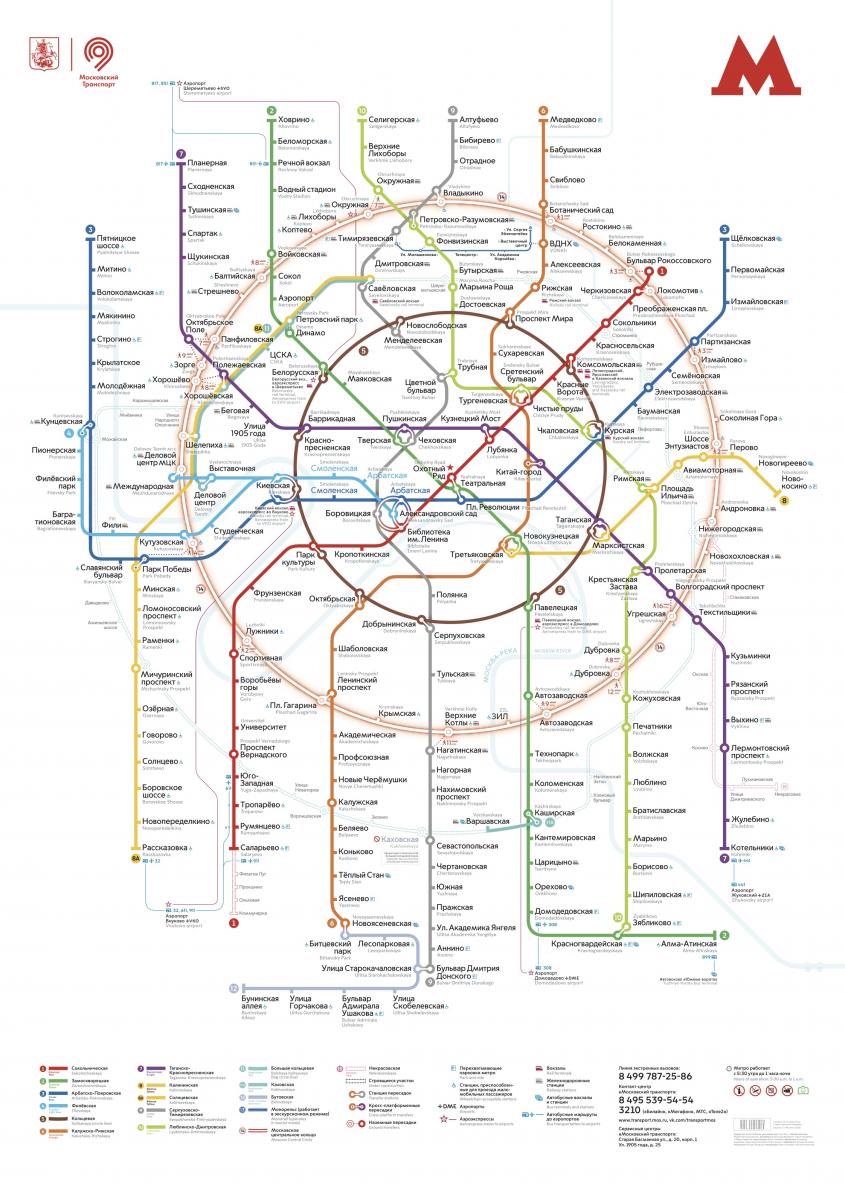
Will it be easy to find my way in the Moscow Metro? It is a question many visitors ask themselves before hitting the streets of the Russian capital. As metro is the main means of transport in Moscow – fast, reliable and safe – having some skills in using it will help make your visit more successful and smooth. On top of this, it is the most beautiful metro in the world !
. There are over 220 stations and 15 lines in the Moscow Metro. It is open from 6 am to 1 am. Trains come very frequently: during the rush hour you won't wait for more than 90 seconds! Distances between stations are quite long – 1,5 to 2 or even 3 kilometers. Metro runs inside the city borders only. To get to the airport you will need to take an onground train - Aeroexpress.
RATES AND TICKETS
Paper ticket A fee is fixed and does not depend on how far you go. There are tickets for a number of trips: 1, 2 or 60 trips; or for a number of days: 1, 3 days or a month. Your trips are recorded on a paper ticket. Ifyou buy a ticket for several trips you can share it with your traveling partner passing it from one to the other at the turnstile.
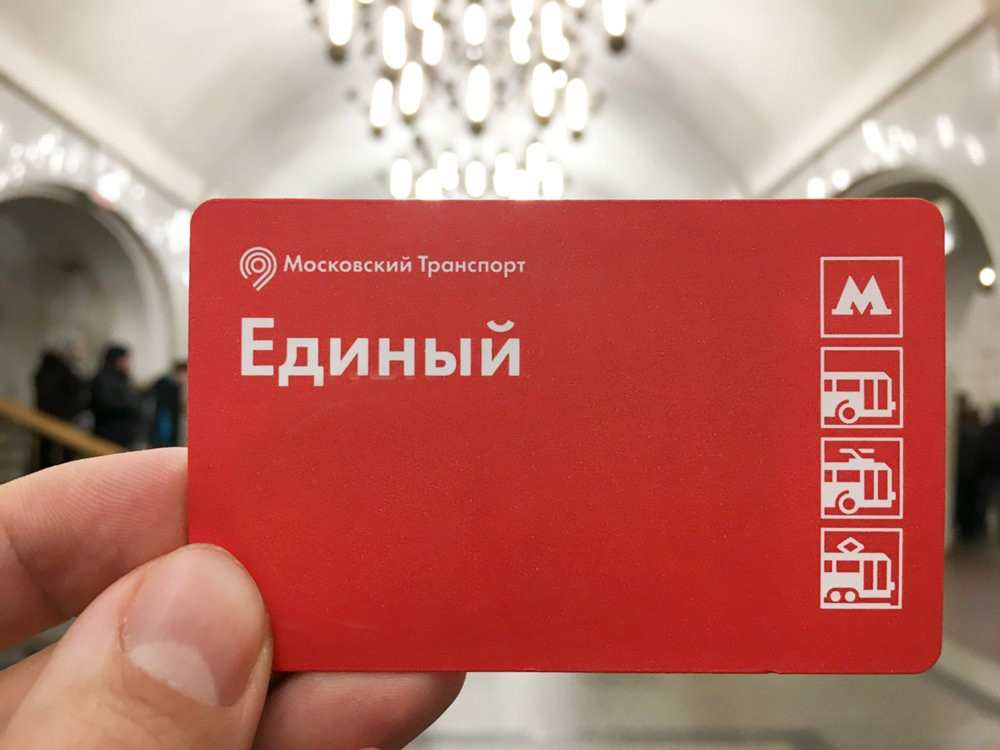
On every station there is cashier and machines (you can switch it to English). Cards and cash are accepted. 1 trip - 55 RUB 2 trips - 110 RUB
Tickets for 60 trips and day passes are available only at the cashier's.
60 rides - 1900 RUB
1 day - 230 RUB 3 days - 438 RUB 30 days - 2170 RUB.
The cheapest way to travel is buying Troyka card . It is a plastic card you can top up for any amount at the machine or at the ticket office. With it every trip costs 38 RUB in the metro and 21 RUB in a bus. You can get the card in any ticket office. Be prepared to leave a deposit of 50 RUB. You can get it back returning the card to the cashier.
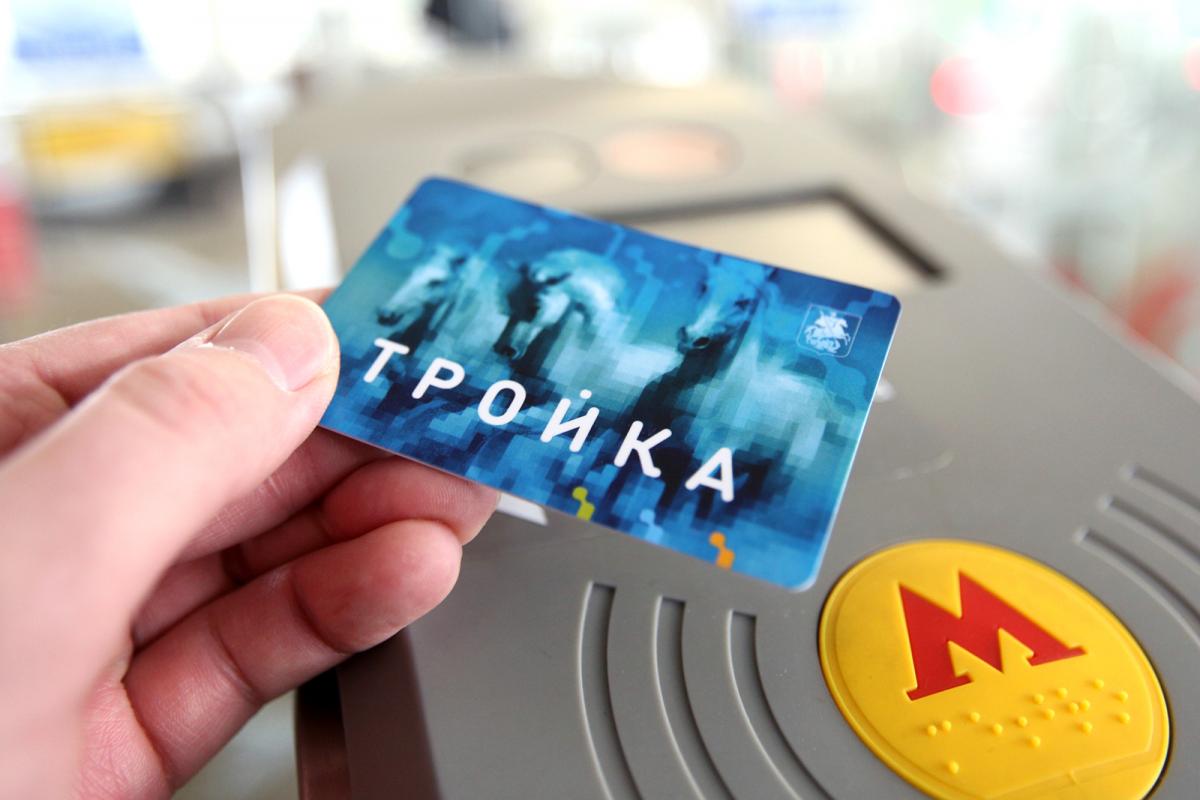
SamsungPay, ApplePay and PayPass cards.
One turnstile at every station accept PayPass and payments with phones. It has a sticker with the logos and located next to the security's cabin.
GETTING ORIENTED
At the platfrom you will see one of these signs.
It indicates the line you are at now (line 6), shows the direction train run and the final stations. Numbers below there are of those lines you can change from this line.
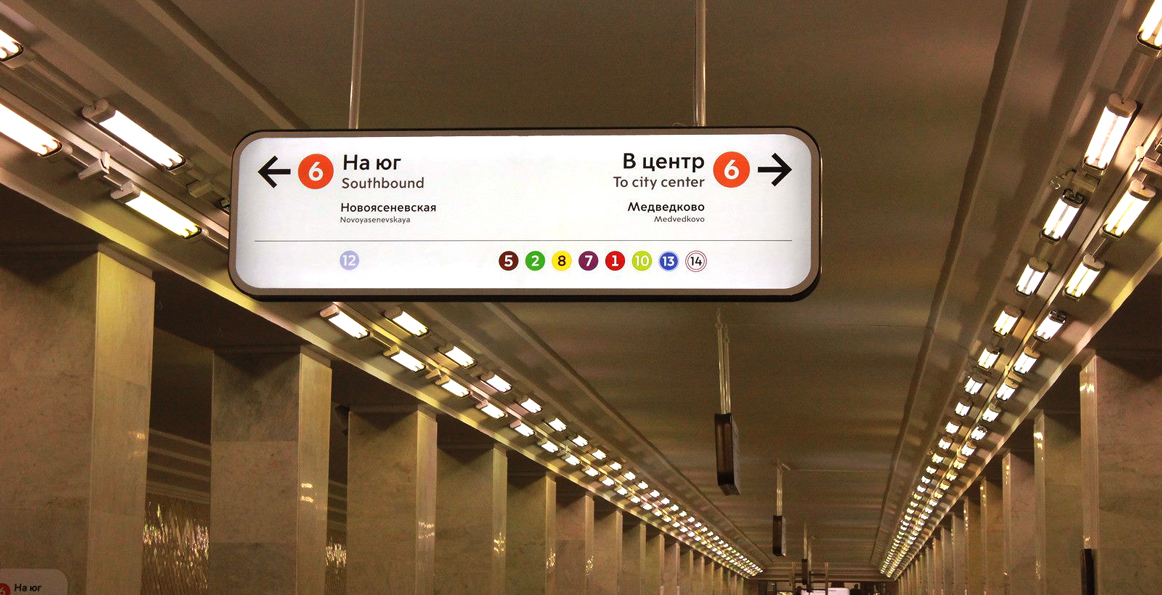
In trains, stations are announced in Russian and English. In newer trains there are also visual indication of there you are on the line.
To change lines look for these signs. This one shows the way to line 2.
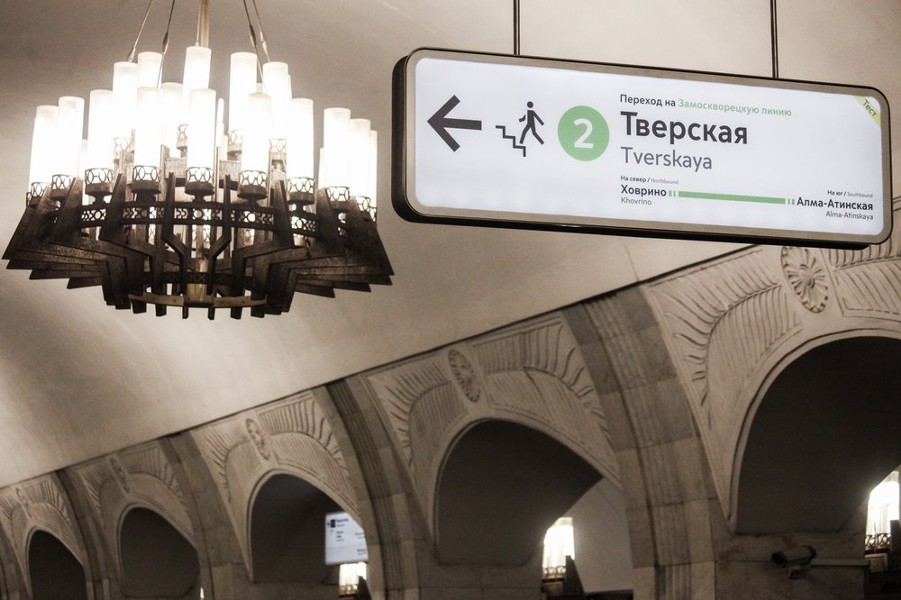
There are also signs on the platfrom. They will help you to havigate yourself. (To the lines 3 and 5 in this case).
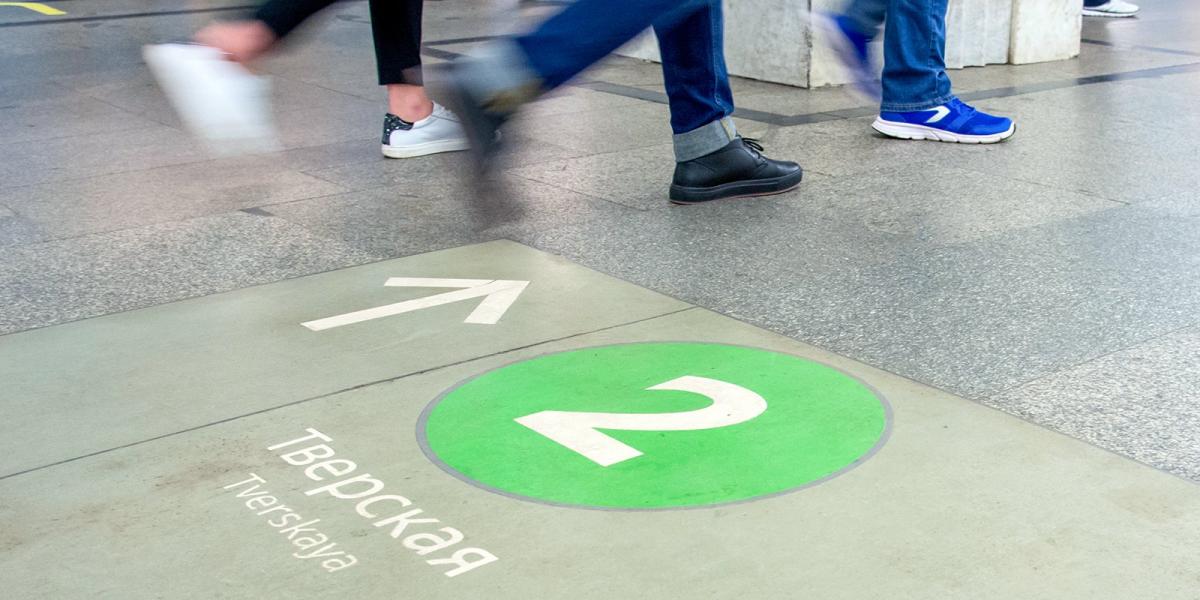

IMAGES
VIDEO
COMMENTS
From Eiffel Tower to Louvre Museum. You have four options for getting to The Louvre from the Eiffel Tower: the metro, the bus, the taxi, and a leisurely walk. To Louvre Museum by Metro. Paris has an evolved Metro service, and almost every place has a metro station within 500 meters (1/3 of a mile).
Paris RER operates a train from Musée d'Orsay to Champ de Mars Tour Eiffel every 10 minutes. Tickets cost €3 - €5 and the journey takes 6 min. Alternatively, Bus RATP operates a bus from Palais Royal - Musée du Louvre to Pont d'Iéna every 15 minutes. Tickets cost €1 - €3 and the journey takes 18 min. Train operators. Paris RER.
Bus RATP operates a bus from Pont d'Iéna to Quai François Mitterrand every 15 minutes. Tickets cost €2 - €4 and the journey takes 14 min. Alternatively, Paris RER operates a train from Champ de Mars Tour Eiffel to Musée d'Orsay every 10 minutes. Tickets cost €3 - €5 and the journey takes 7 min.
De la tour Eiffel au musée du Louvre. Vous avez quatre options pour vous rendre au Louvre depuis la Tour Eiffel : le métro, le bus, le taxi et une promenade tranquille. Vers le musée du Louvre en métro. Paris a un service de métro évolué, et presque chaque endroit a une station de métro à moins de 500 mètres (1/3 de mile).
Metro stations Trocadéro (line 9) and Ecole Militaire (line 8) are 15 minutes by foot from the Tower. Another option is line C of the RER train network, which serves the Champ de Mars-Tour Eiffel station, located 5 minutes' walk from Entrance 1. You can also come by bus: lines 82, 30 and 42 serve stops 5 minutes' walk from Entrance 2 of ...
Nous vous recommandons de venir à la tour Eiffel par les transports en commun parisiens : métro, RER, bus. La tour Eiffel est bien desservie par le métro : il y a 3 stations de métro à proximité. Sur la ligne 6, la station Bir Hakeim est la plus proche, à moins de 10 minutes à pied de l'entrée 1 (Allée des Refuzniks) du monument.
1- Our tips to buy online. 2- All our advices for D-Day : how to prepare, how to come. 3- Getting around the esplanade. 4- Make the most out of your visit thanks to the online visitors' guide. 5- Smart tips for your visit. 6- After the Eiffel Tower, visit the other must-see places in Paris!
Metro. Palais-Royal / Musée du Louvre (lines 1 and 7) Pyramides (line 14) Bus. No. 21, 27, 39, 67, 68, 69, 72, 74, 85, 95. Car. An underground car park is located at 1 Avenue du Général Lemonier, from which you can access the museum via the Galerie du Carrousel entrance. It is open daily from 7 a.m. to 11 p.m. Visitors with disabilities are ...
The Louvre Museum is located on the opposite side of the River Seine, about 4.3 kilometers (2.7 miles) away from the Eiffel Tower. Get Directions. It takes approximately twelve minutes by taxi to reach the museum from the tower. Alternatively, if you choose to walk, the distance is 3.5 kilometers (2.1 miles), which would take approximately 45 ...
The closest Paris Metro station to the Eiffel Tower is Champ de Mars / Tour Eiffel on line RER C. Other Metro stations close to the Eiffel Tower include Ecole Militaire on Line 8, and Bir-Hakeim on Line 6. The best view of the Eiffel Tower is actually from the opposite side of the river Seine at the Trocadéro, accessed by station Trocadéro on ...
Get to the Louvre by bus. Many different buses stop at the Louvre Museum, making it easy no matter which direction you're coming from. Bus routes 21, 24, 27, 39, 48, 68, 69, 72, 81, and 95 will all reach this landmark and stop right near the museum. You'll either get off at the Louvre Rivoli or the Palais Royal Musée du Louvre.
2éme, the Fashionable Sentier. From the 2nd arrondissement, the easiest and direct way to get to the Eiffel Tower is by metro line 9, from Grand Boulevards direction Pont de Sèvres, and exciting at Iéna. From there it is a lovely 7 minute walk along the Seine, or you can hop onto bus 82 toward Luxembourg and get out at Tour Eiffel.
Du Musée du Louvre à la Tour Eiffel. Vous avez quatre options pour vous rendre à la Tour Eiffel depuis le musée du Louvre : le métro, le bus, le taxi et une belle promenade tranquille. Vers la Tour Eiffel en métro. Paris a un service de métro évolué, et presque chaque endroit a une station de métro à moins de 500 mètres (1/3 de mile).
1 hour walk from The Louvre Museum to Eiffel Tower along La Rive Gauche (the Left Bank) of Seine River in Paris, France.Time Stamps:00:00 - Pavillon de La Tr...
Line C (Versailles / Saint Quentin en Yvelines - Anthony / Massy Palaiseau : stop - champ de Mars - Tour Eiffel) By bus: Bus 82, stops: "tour Eiffel" or "Montessuy". Bus 30, stop: « tour Eiffel ». Bus 86, stop: « Champ de Mars ». Bus 69, stop: "Champ de Mars". Bus 72, stop: « Pont d'Iena ». You can walk to the Eiffel Tower from all of ...
Bus RATP operates a bus from Palais Royal - Musée du Louvre to Pont d'Iéna every 15 minutes. Tickets cost €1 - €3 and the journey takes 12 min. Alternatively, Paris RER operates a train from Musée d'Orsay to Champ de Mars Tour Eiffel every 10 minutes. Tickets cost €3 - €5 and the journey takes 6 min.
Just avoid rush hour. The Metro is stunning andprovides an unrivaled insight into the city's psyche, past and present, but it also happens to be the best way to get around. Moscow has Uber, and the Russian version called Yandex Taxi,butalso some nasty traffic. Metro trains come around every 90 seconds or so, at a more than 99 percent on-time ...
Moscow Metro private tours. 2-hour tour $87: 10 Must-See Moscow Metro stations with hotel pick-up and drop-off. 3-hour tour $137: 20 Must-See Moscow Metro stations with Russian lunch in beautifully-decorated Metro Diner + hotel pick-up and drop off. Metro pass is included in the price of both tours.
Moscow Metro. The Moscow Metro Tour is included in most guided tours' itineraries. Opened in 1935, under Stalin's regime, the metro was not only meant to solve transport problems, but also was hailed as "a people's palace". Every station you will see during your Moscow metro tour looks like a palace room. There are bright paintings ...
Bus RATP operates a bus from Louvre - Rivoli to Pont d'Iéna every 15 minutes. Tickets cost €1 - €3 and the journey takes 13 min. Alternatively, Paris RER operates a train from Saint-Michel Notre-Dame to Champ de Mars Tour Eiffel every 10 minutes. Tickets cost €3 - €5 and the journey takes 10 min. Train operators. Paris RER.
The Eiffel Tower on social media. See more photos. Discover or visit the tower: buy a ticket (10.5 to 26.10 € maximum for adults and 2.6 to 13.10 € for children and young people), news and practical information.
As metro is the main means of transport in Moscow - fast, reliable and safe - having some skills in using it will help make your visit more successful and smooth. On top of this, it is the most beautiful metro in the world!. There are over 220 stations and 15 lines in the Moscow Metro. It is open from 6 am to 1 am.